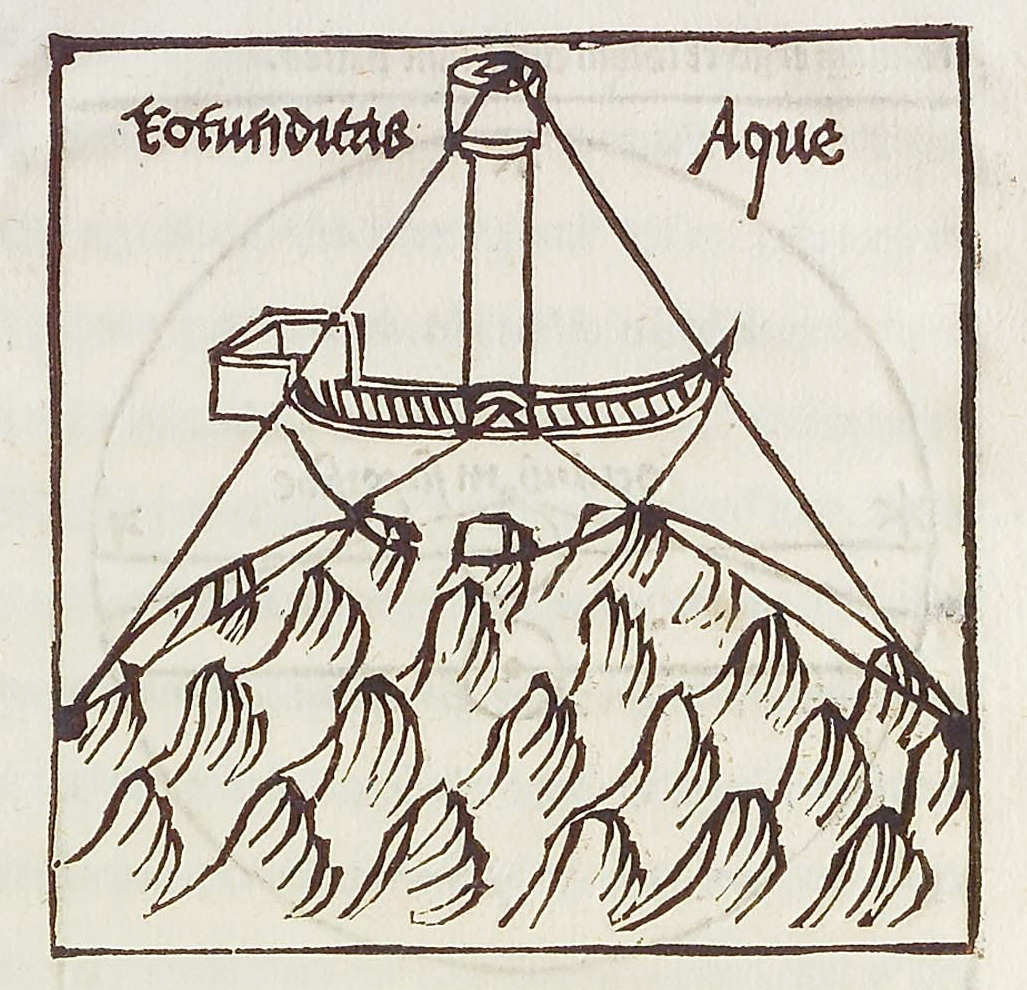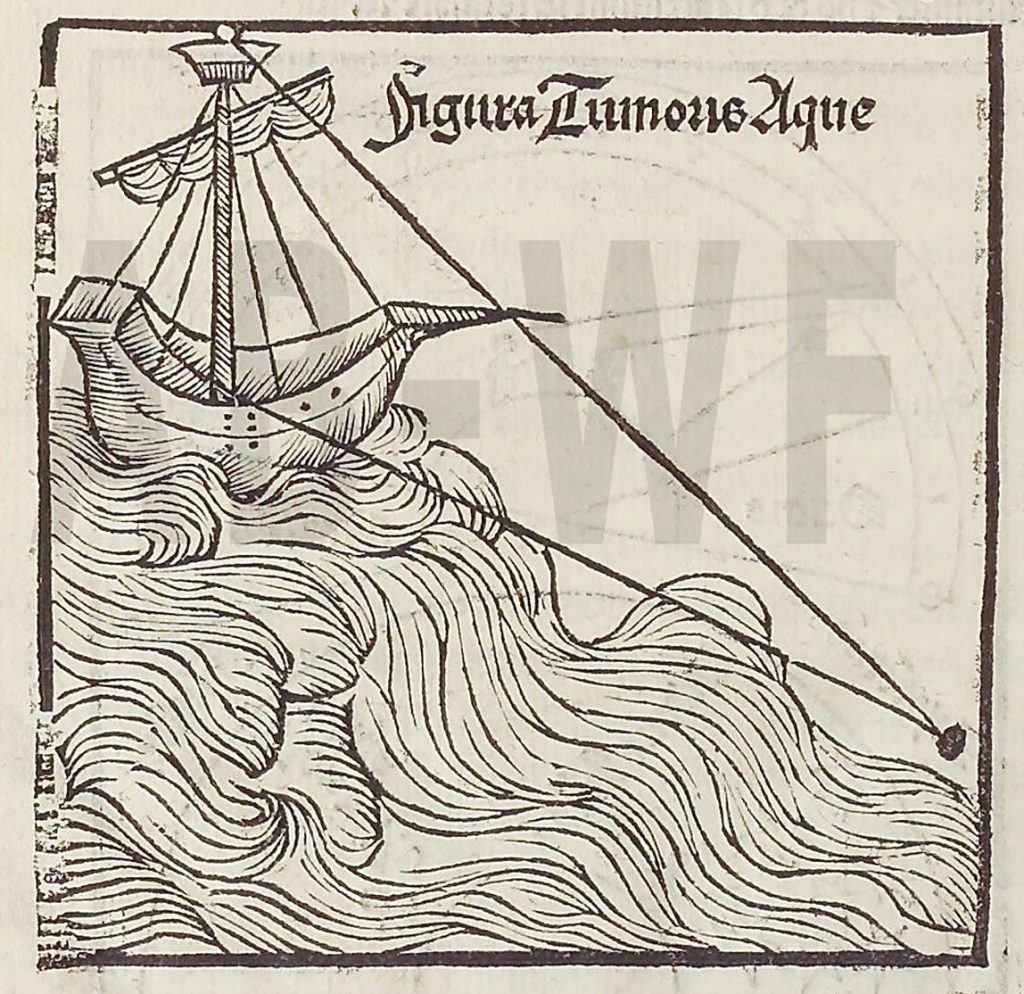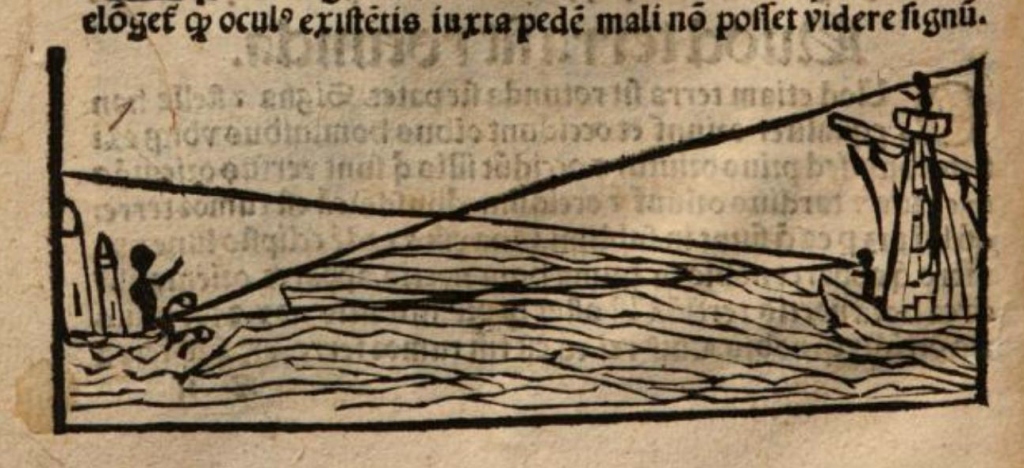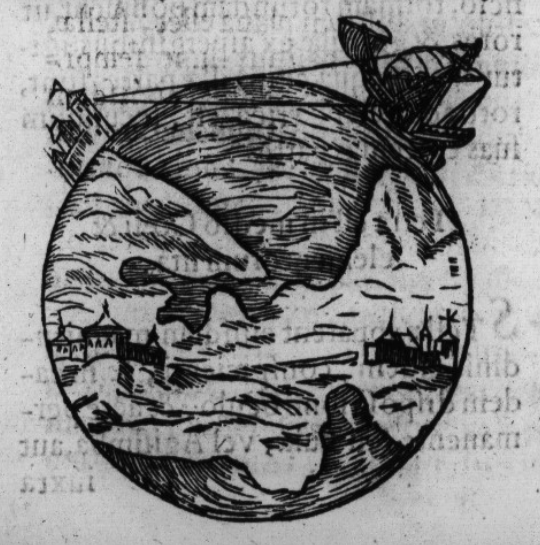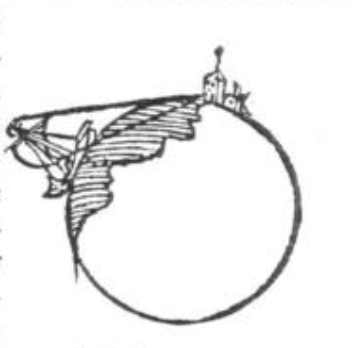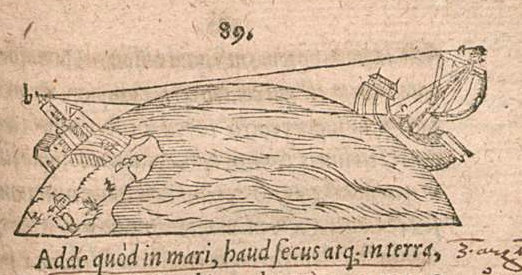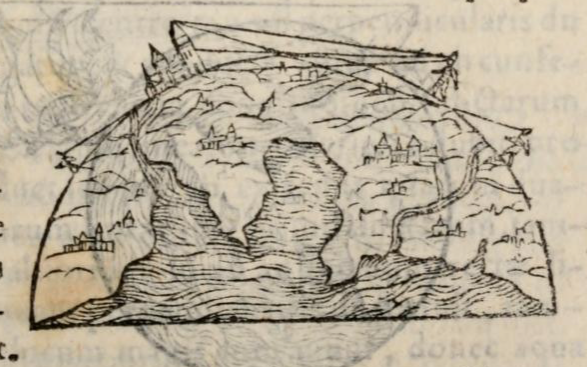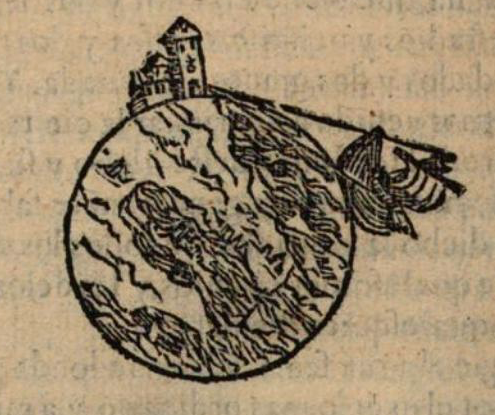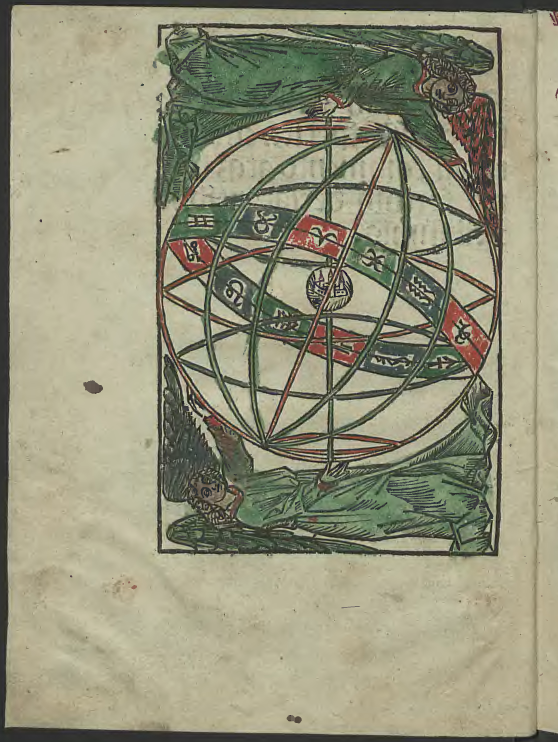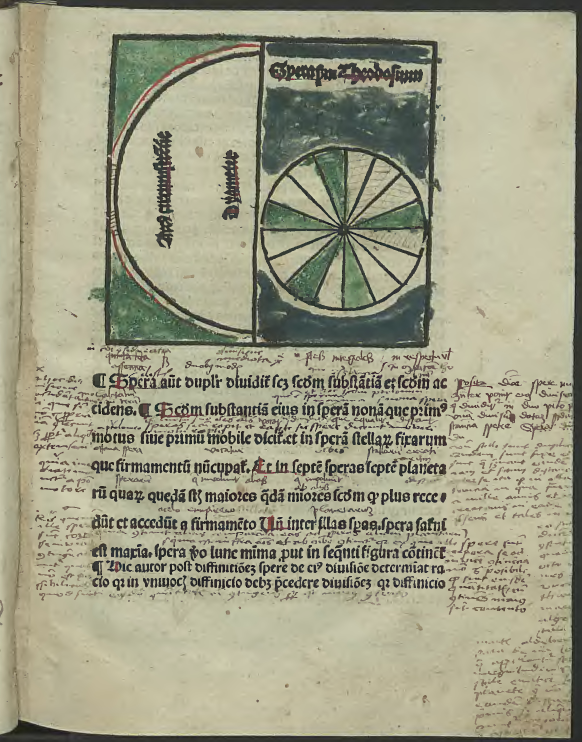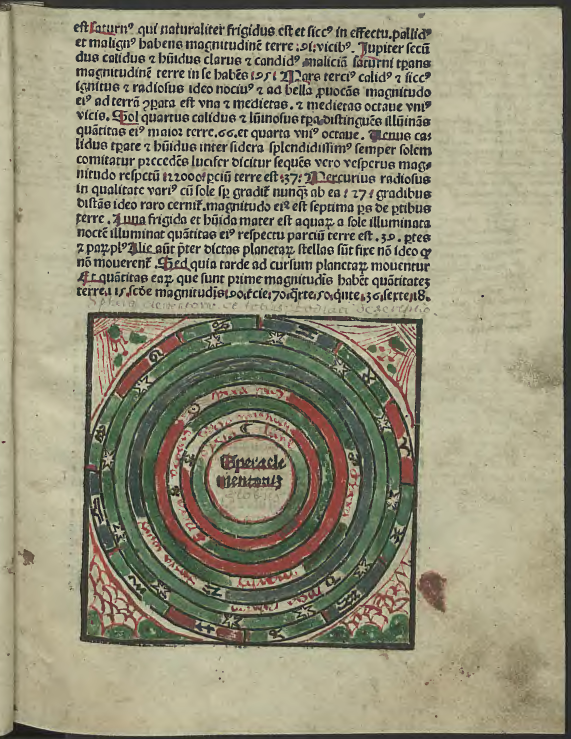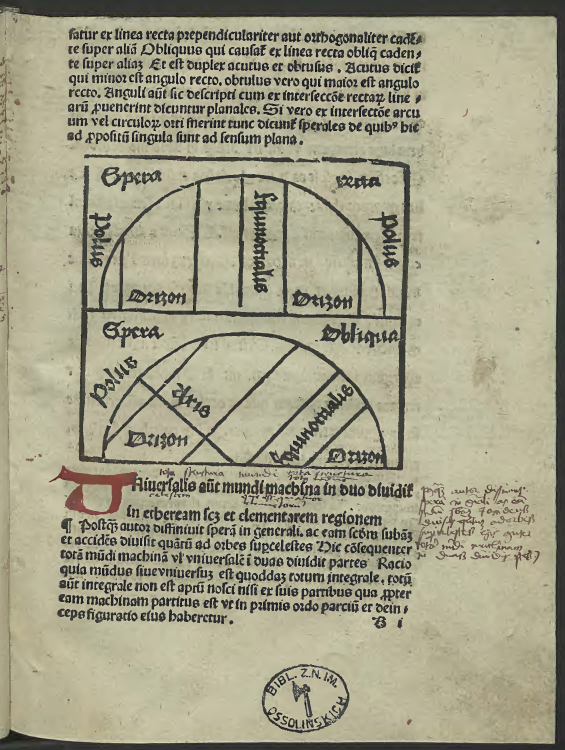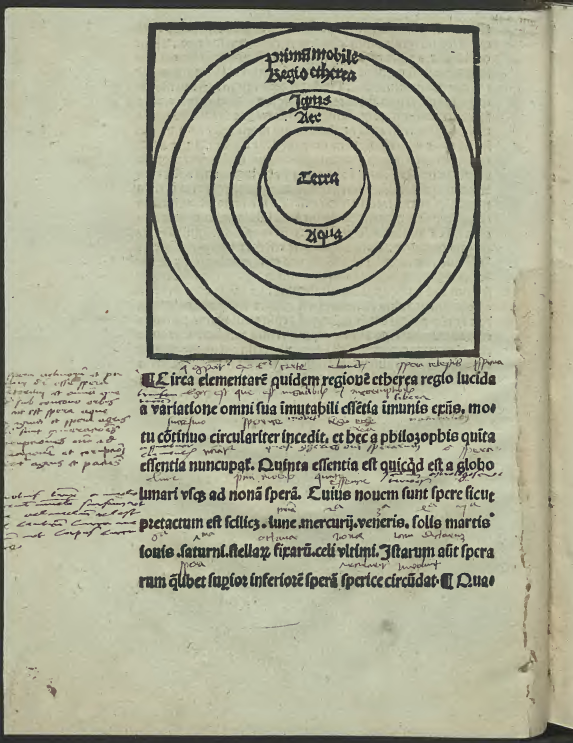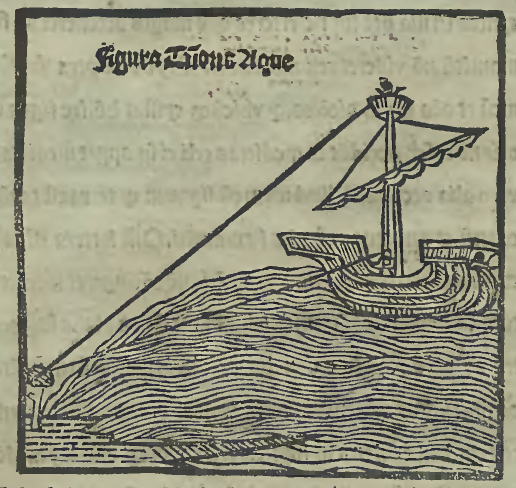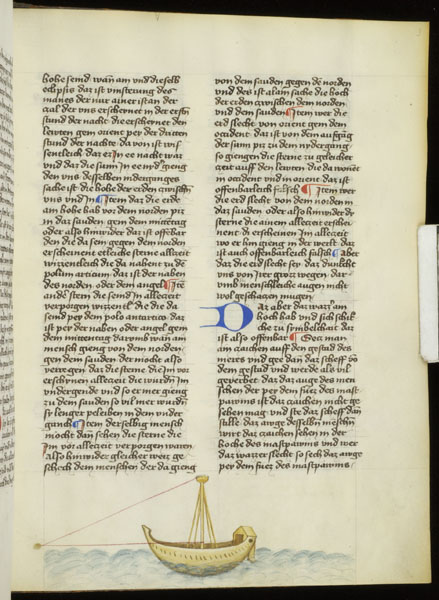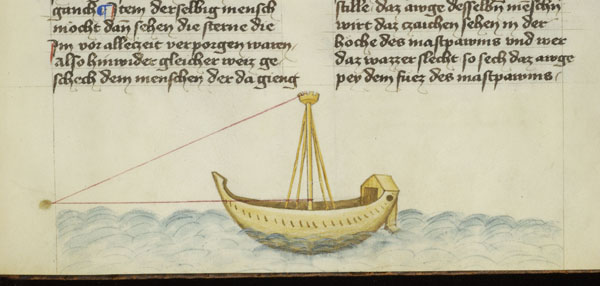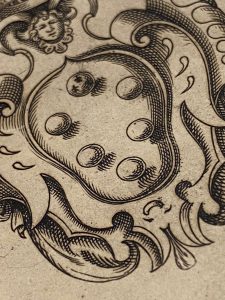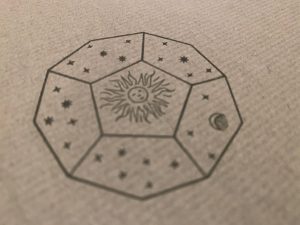De Sphaera van Johannes de Sacrobosco. Ik vind ‘m bijzonder. Deze editie van 1647 van Elsevier is een van de laatste edities die van dit boek is gemaakt. Hoewel een super vernieuwend concept voor de wereld in 1230 en zelfs nog in 1647 was de inhoud van dit boek tegen die tijd wel verouderd en dus niet meer een hoofdbron van kennis over de aarde op vele Europese universiteiten.
Ik heb het boek in mogen zien op de afdeling Special Collections van de Universiteitsbibliotheek in Leiden.
Inmiddels was ik er zó ingedoken dat ik er zelf ook een wilde hebben: da’s niet zo makkelijk, maar het is gelukt. Een editie uit 1604, meteen mijn oudste en meest waardevolle boek…
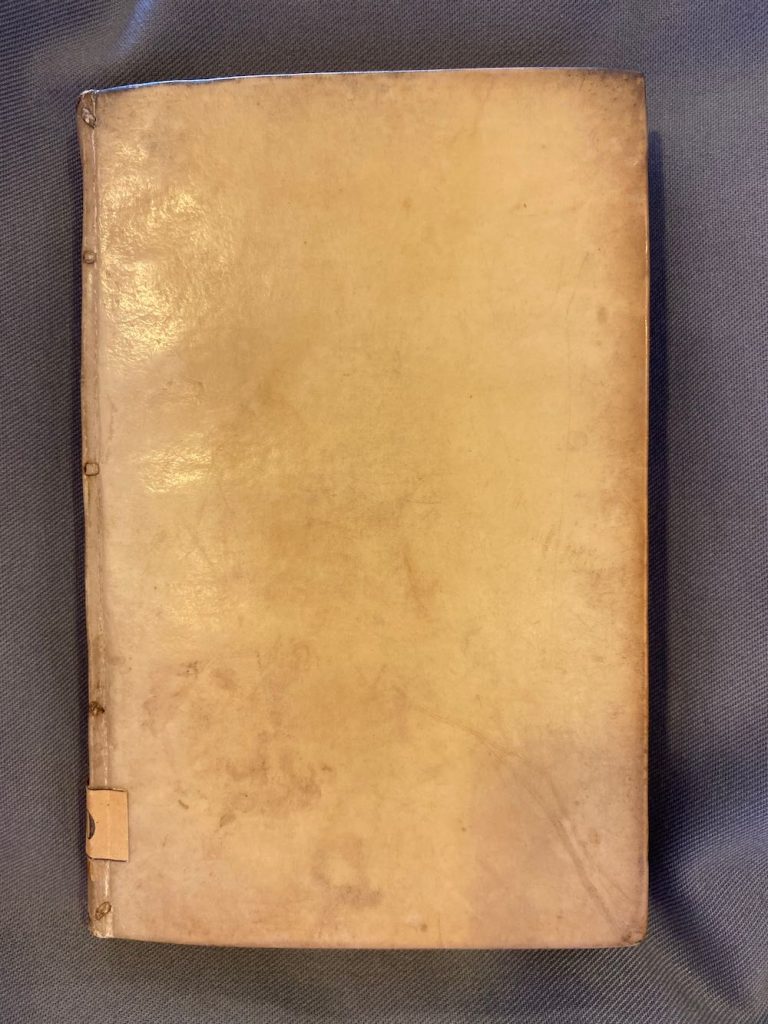
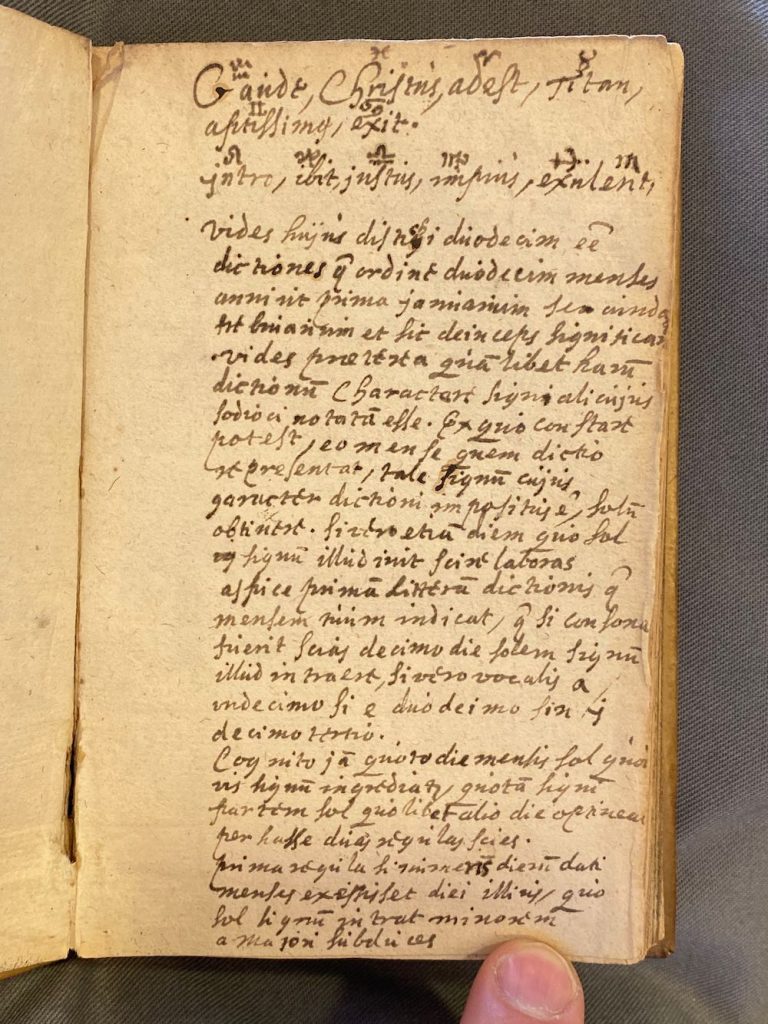
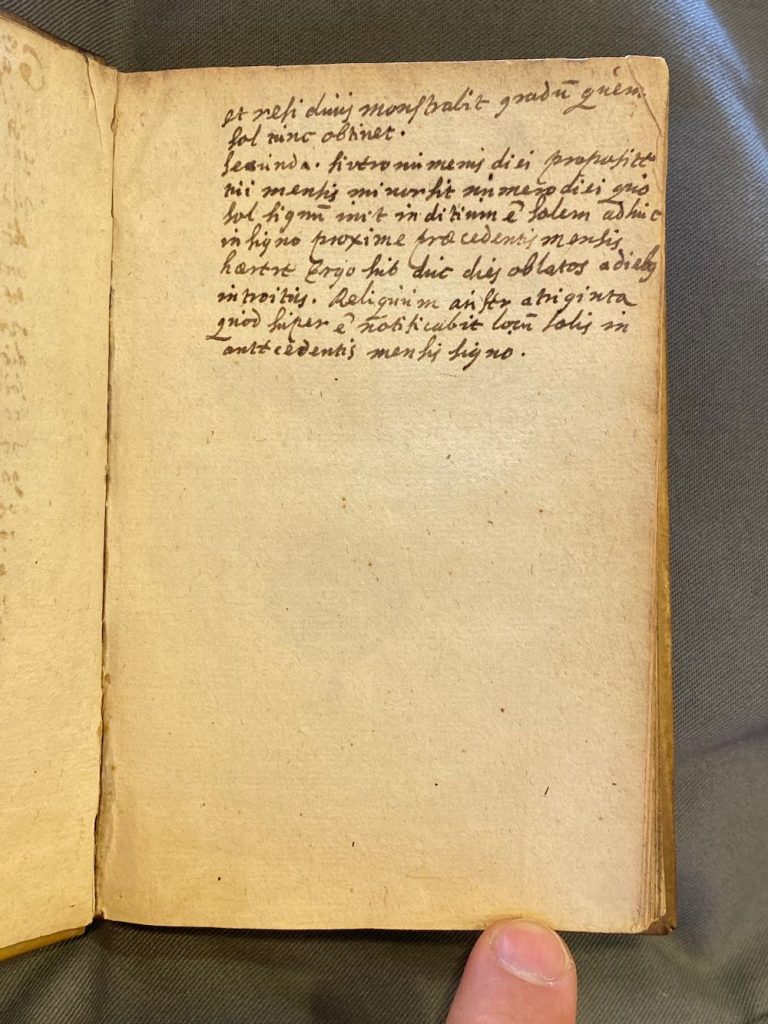
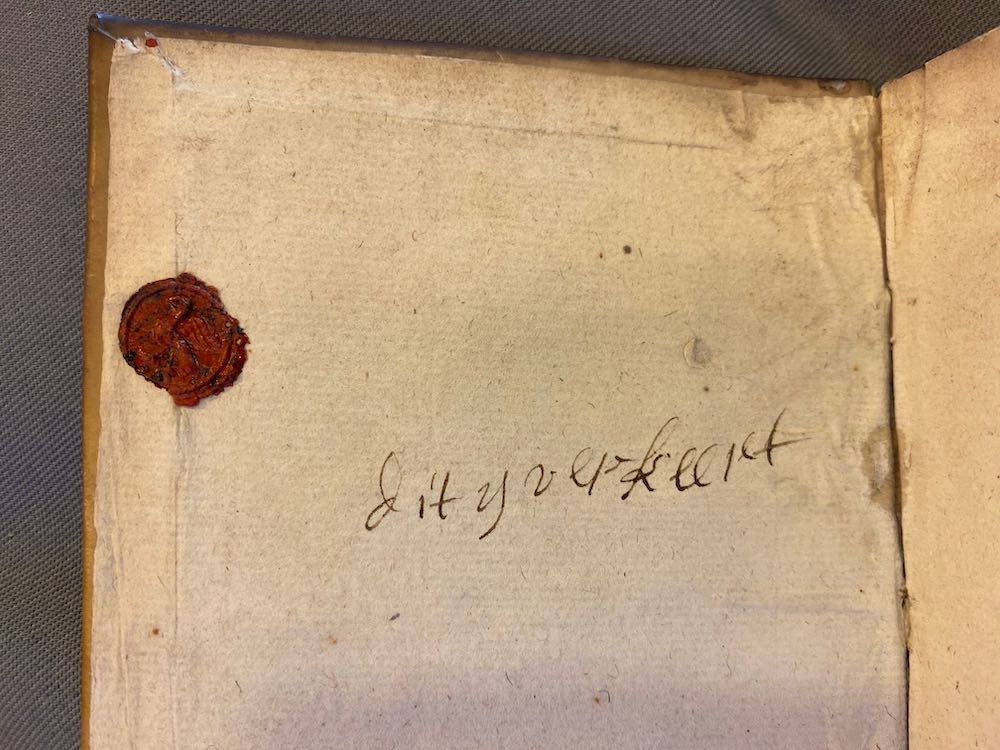
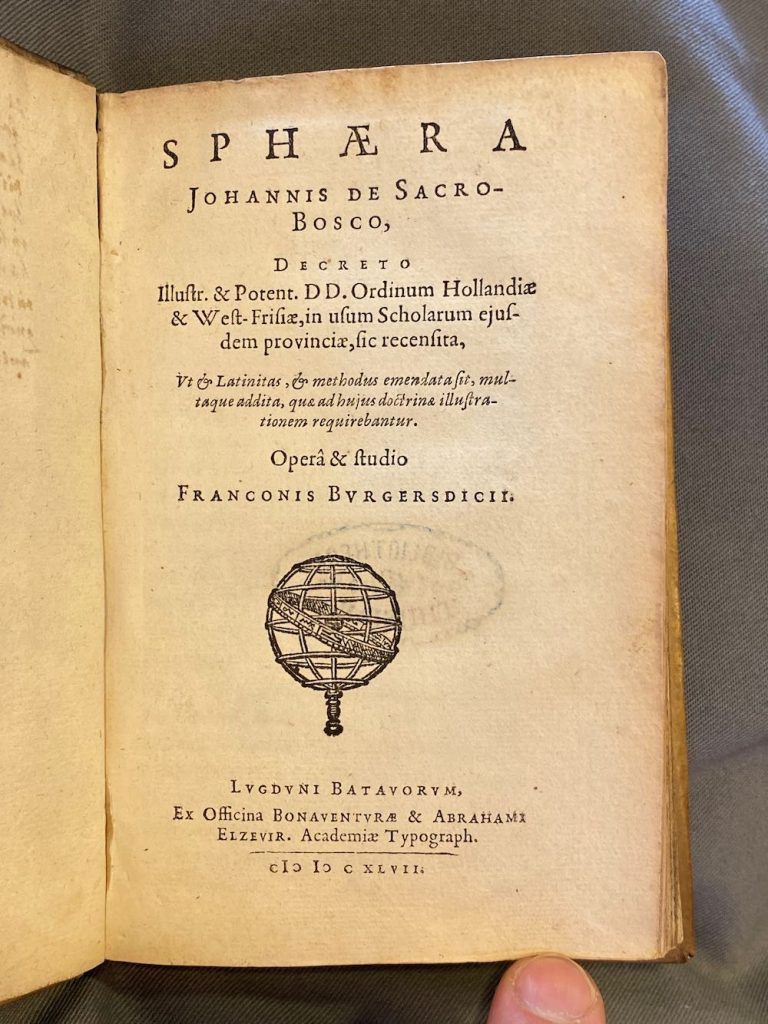
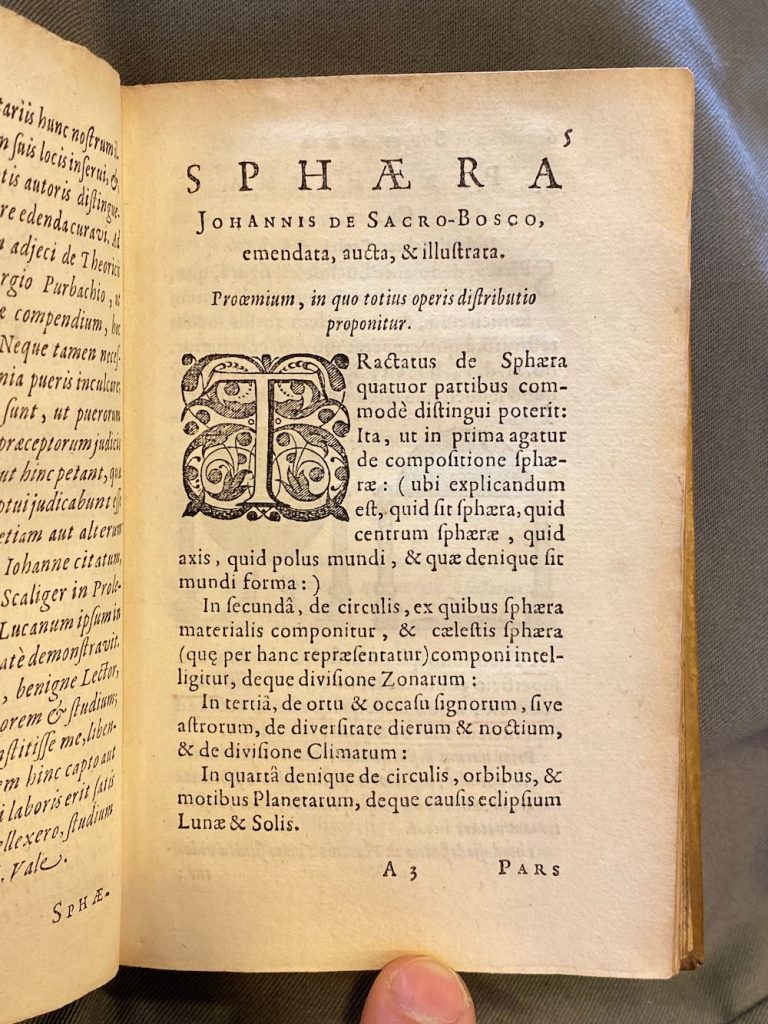
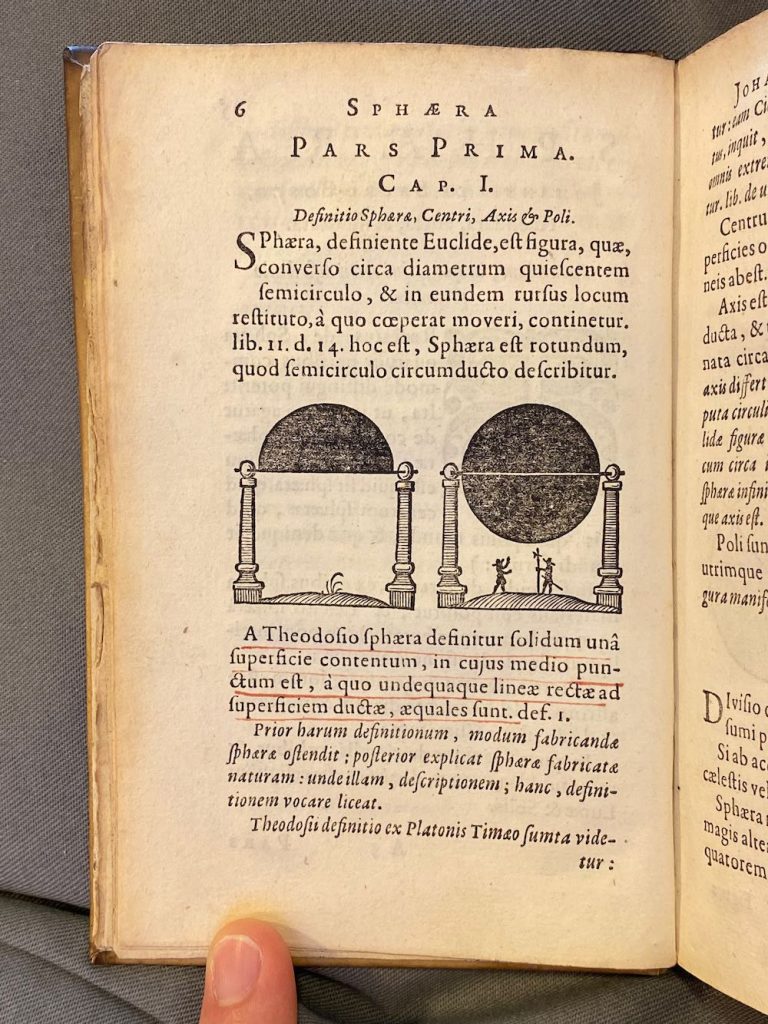
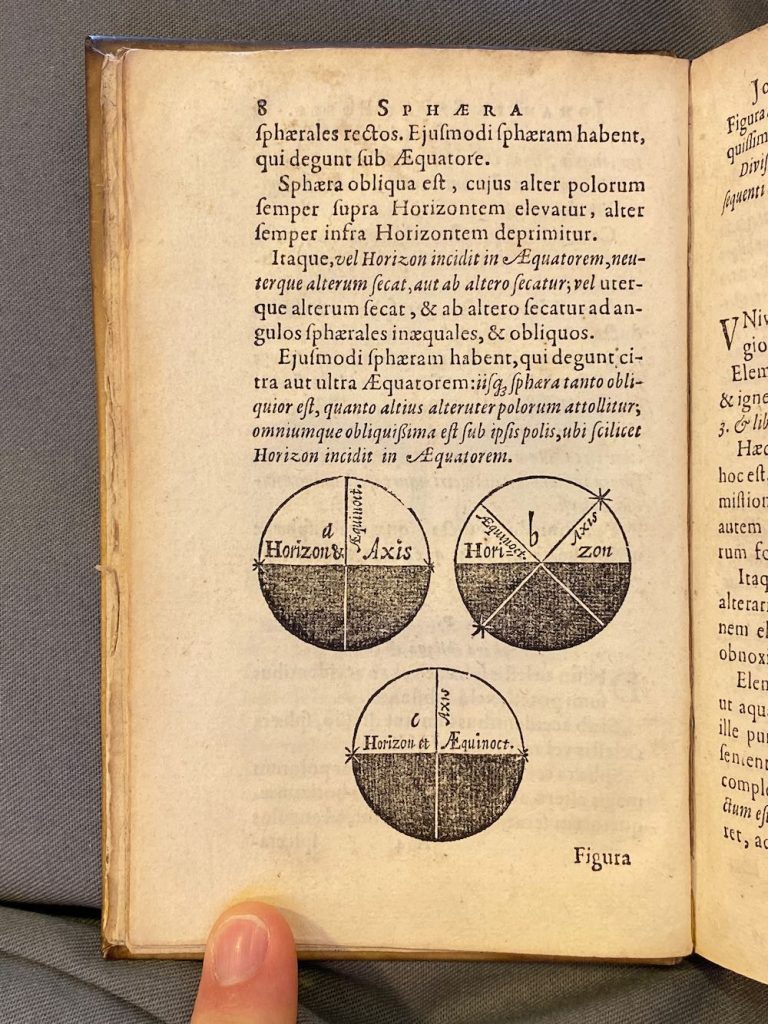
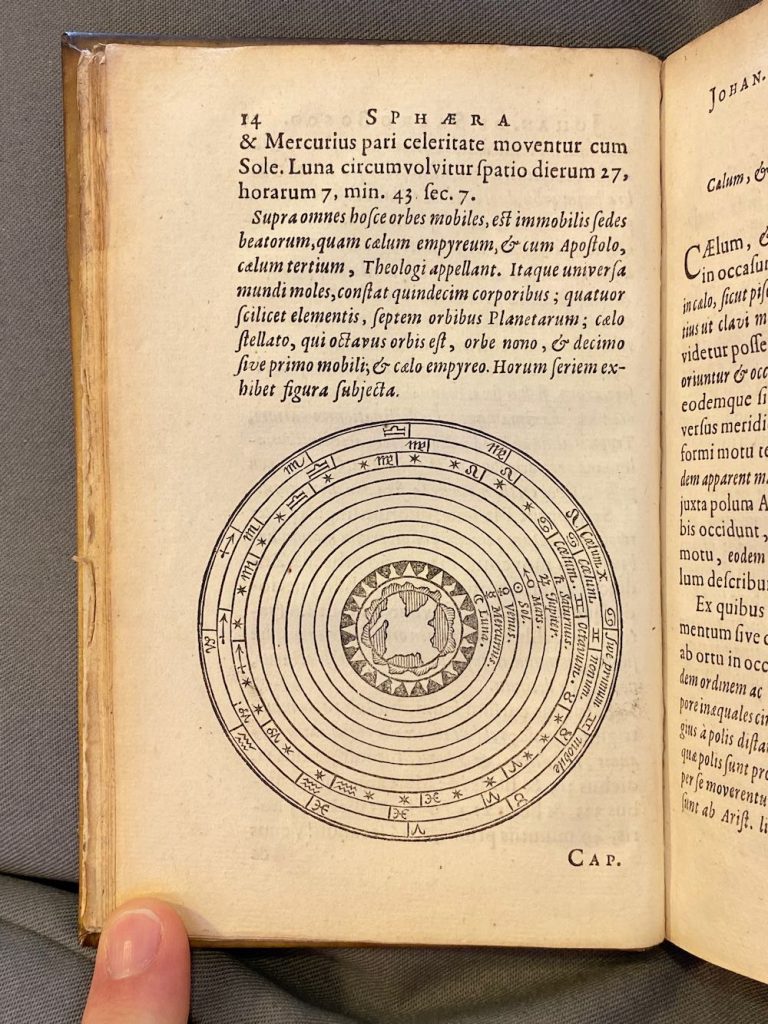
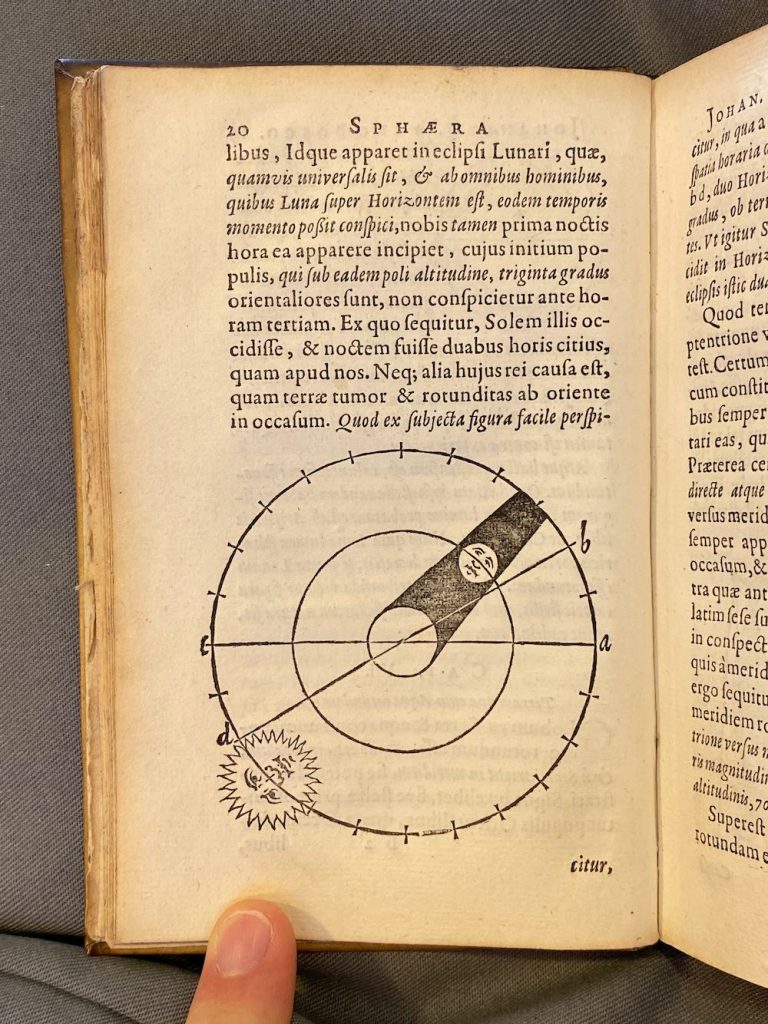
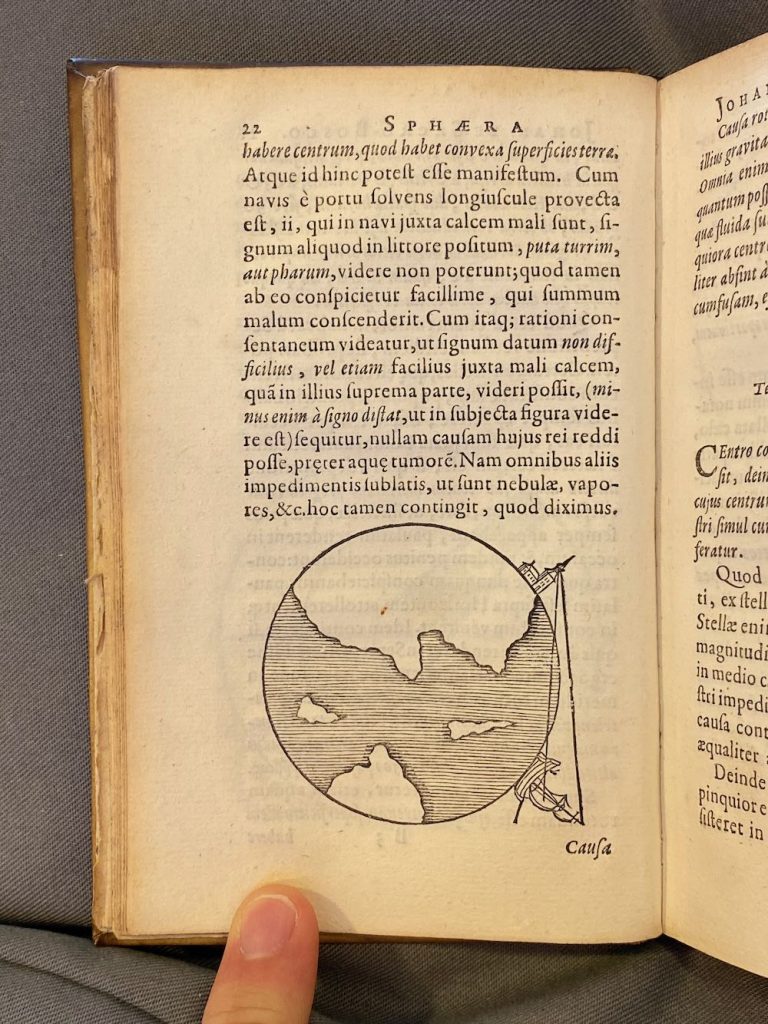
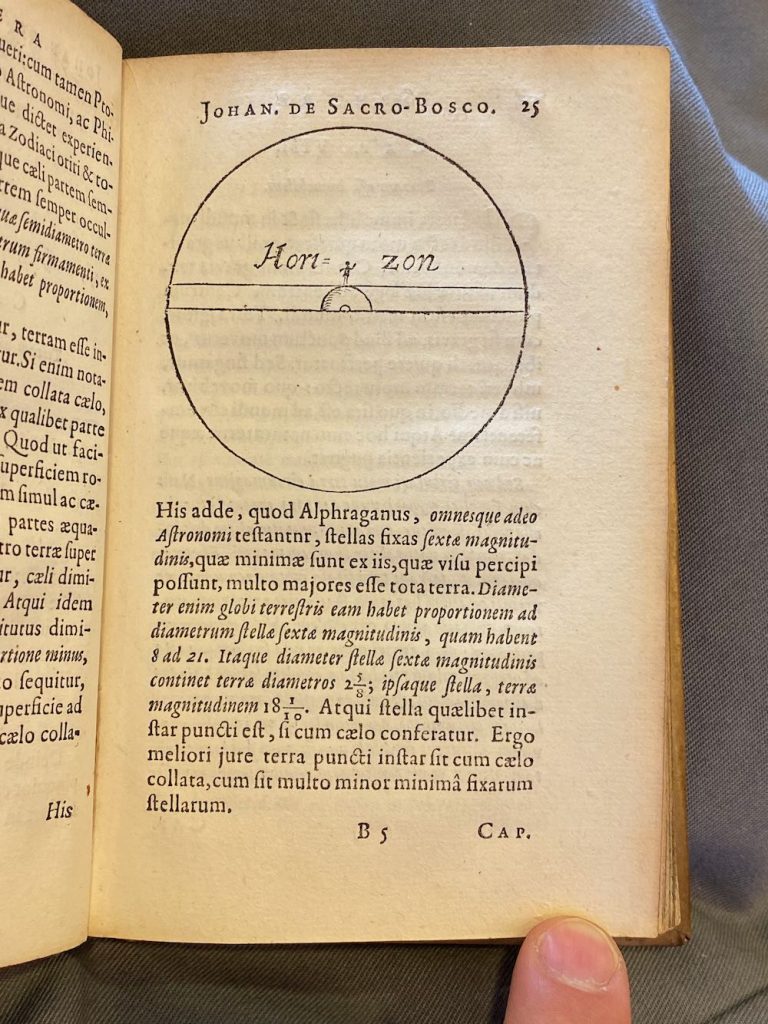
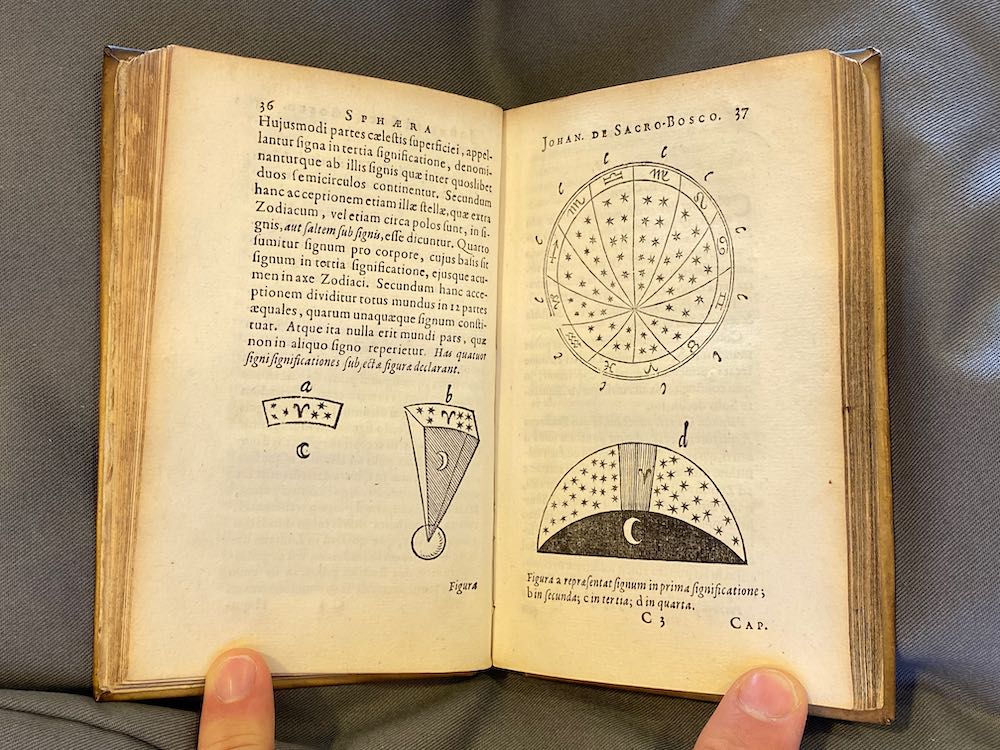
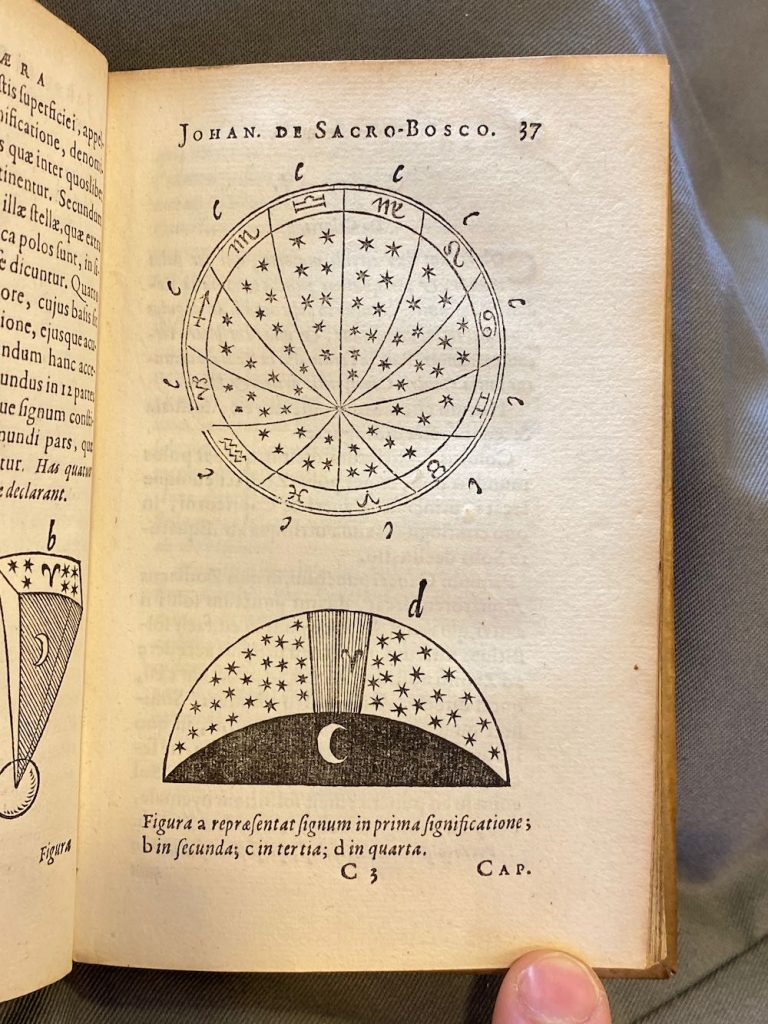
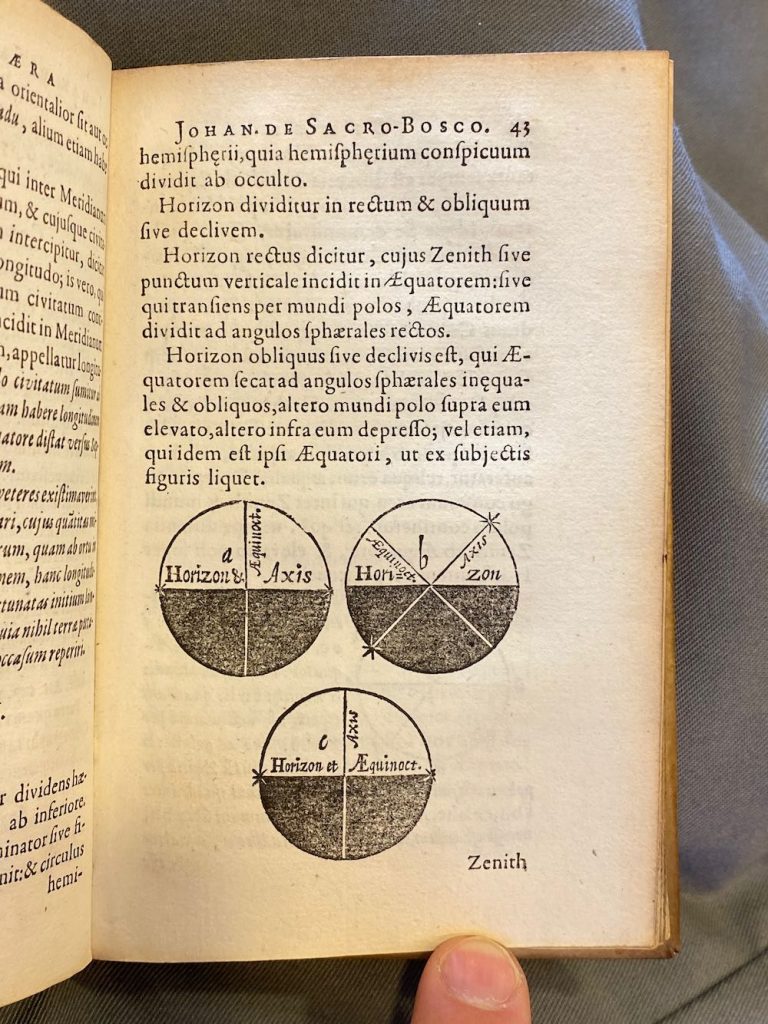
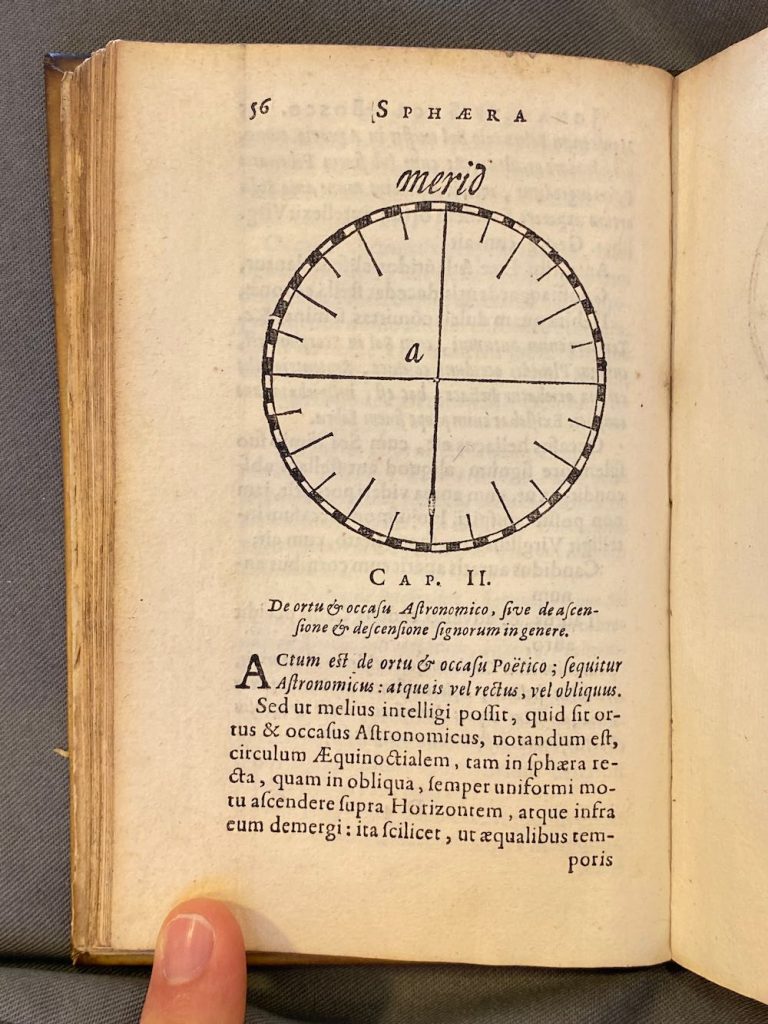
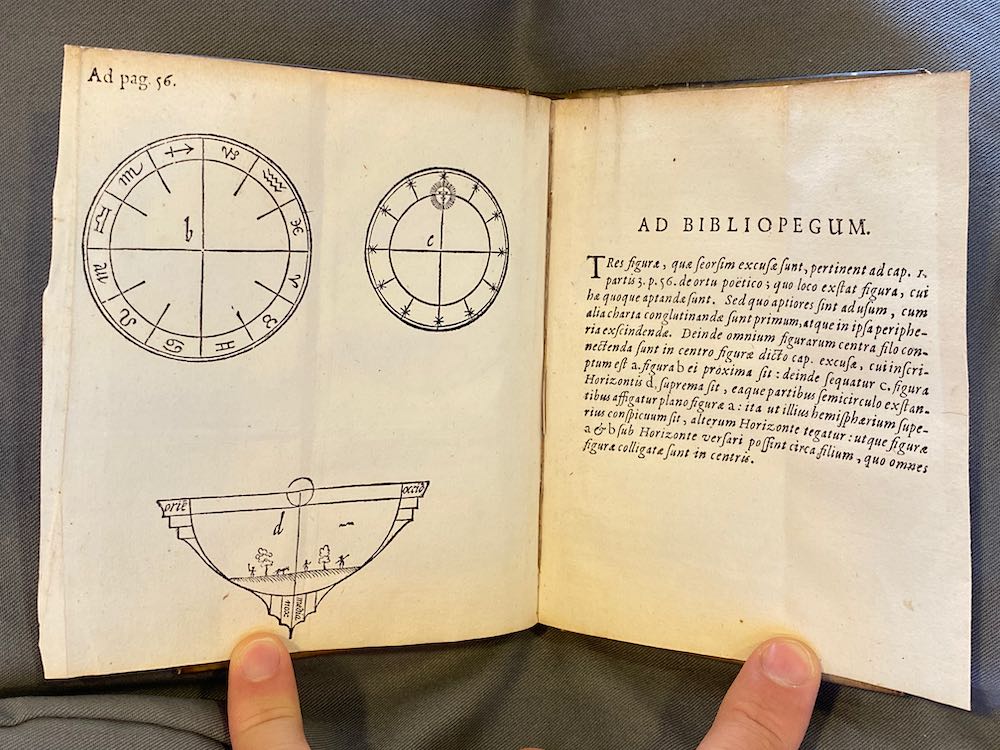
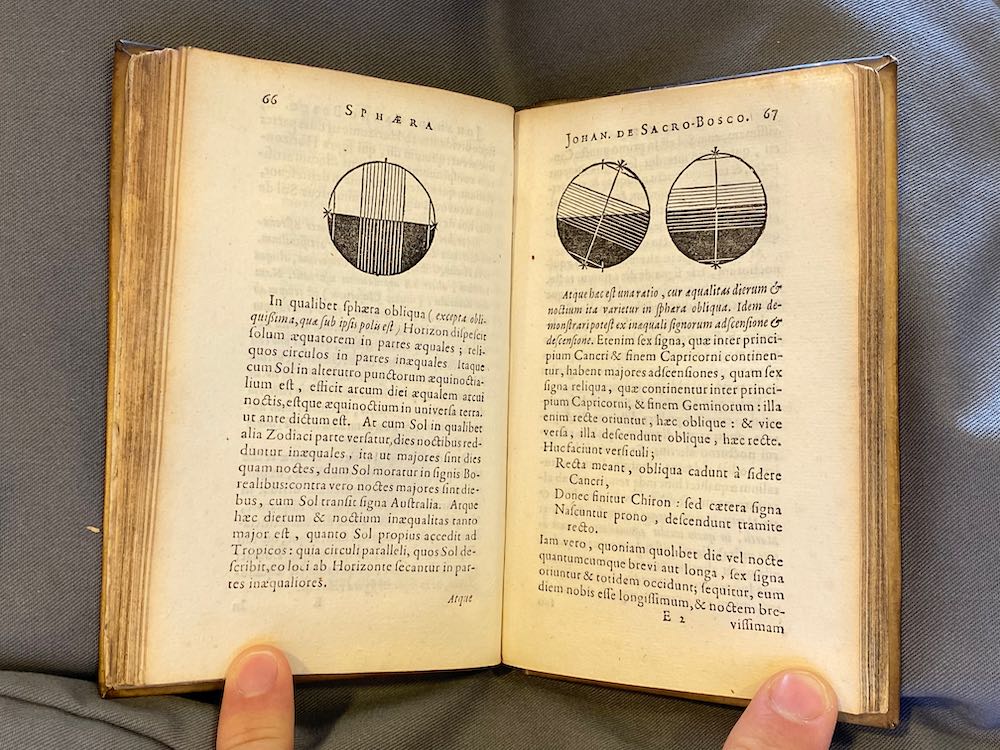
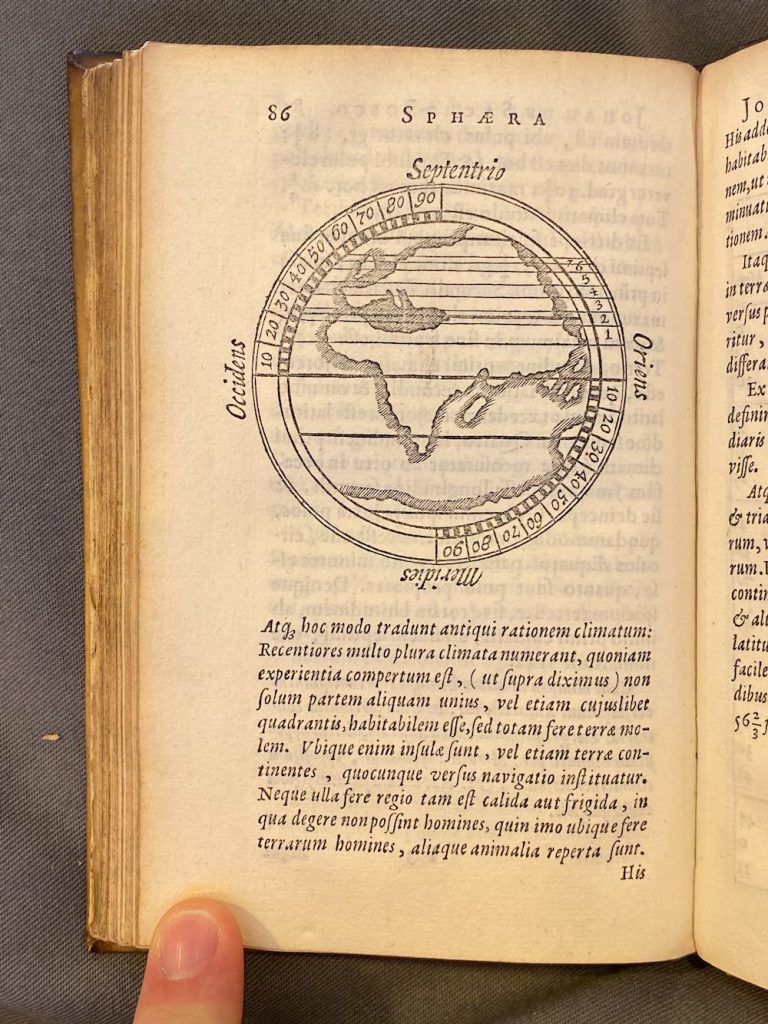
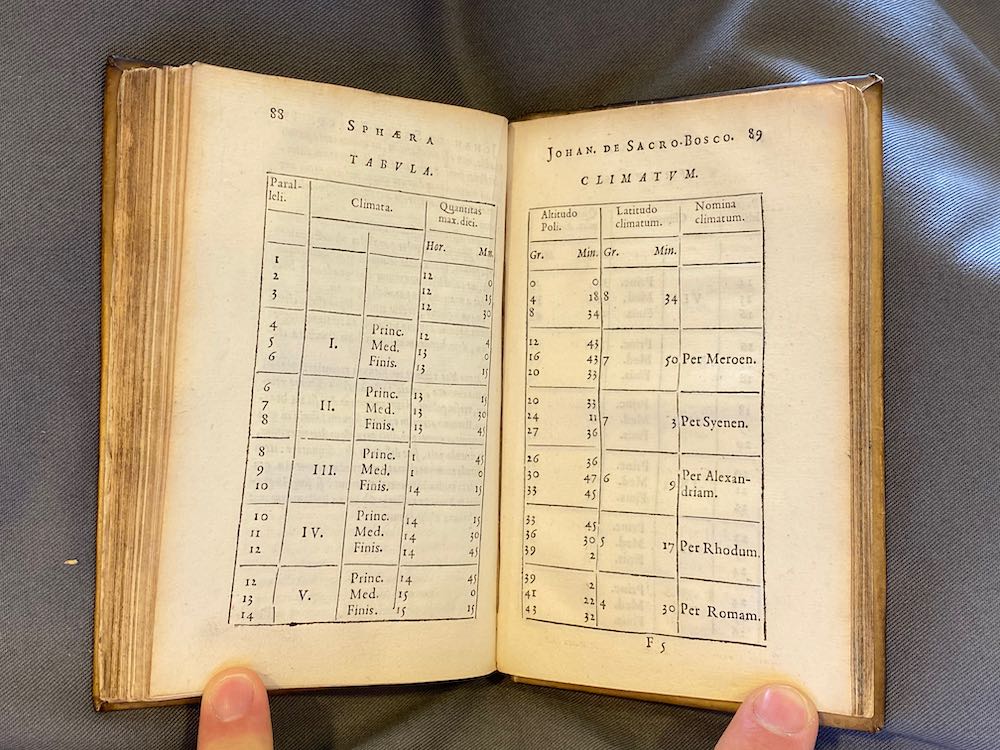
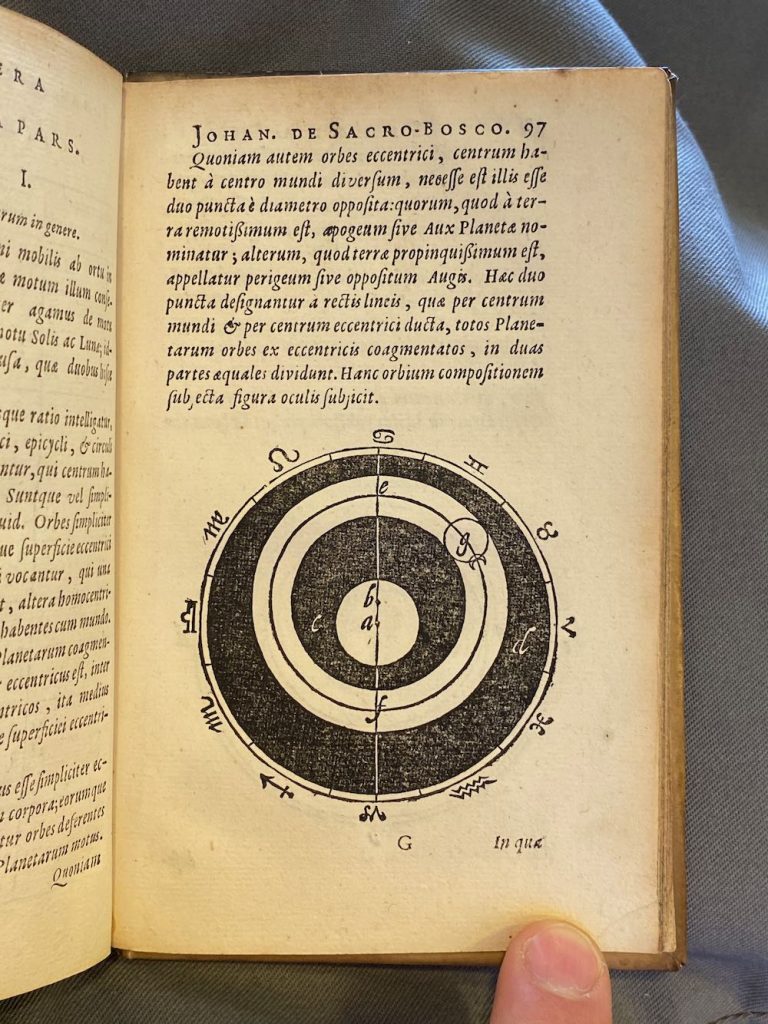
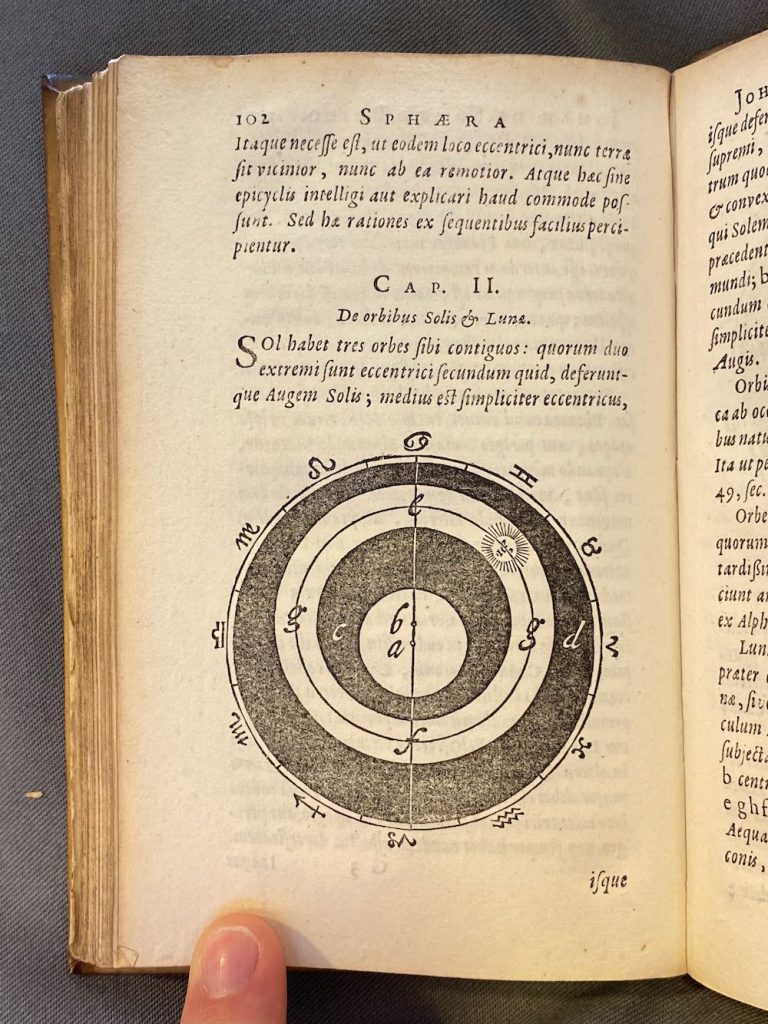
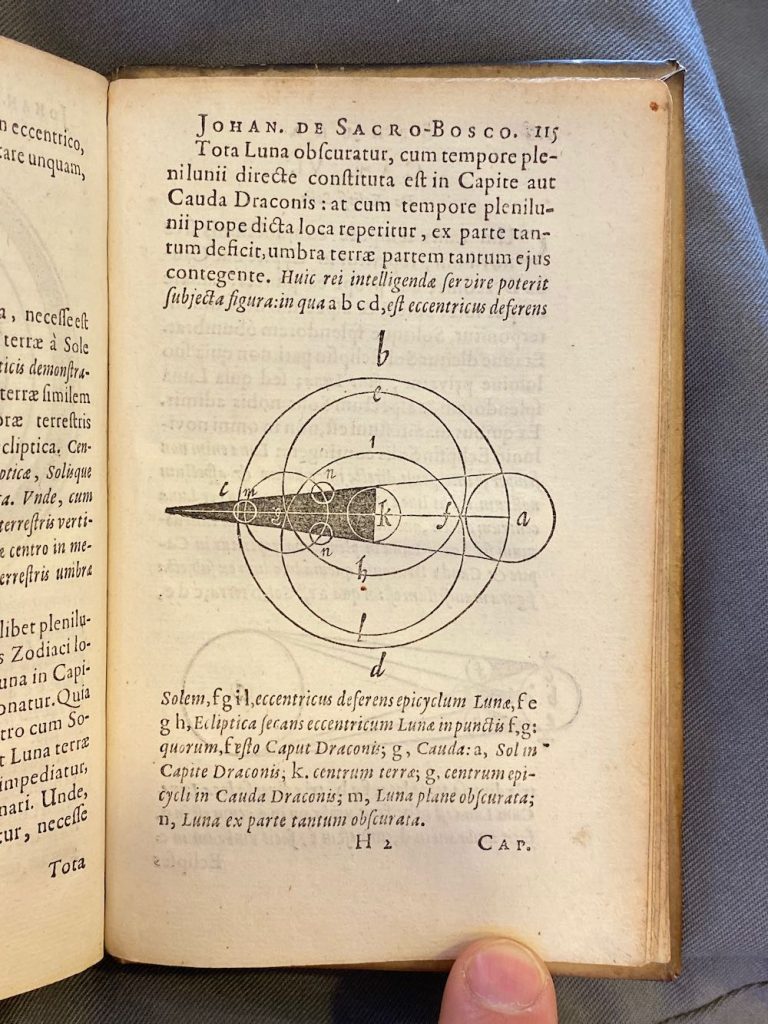
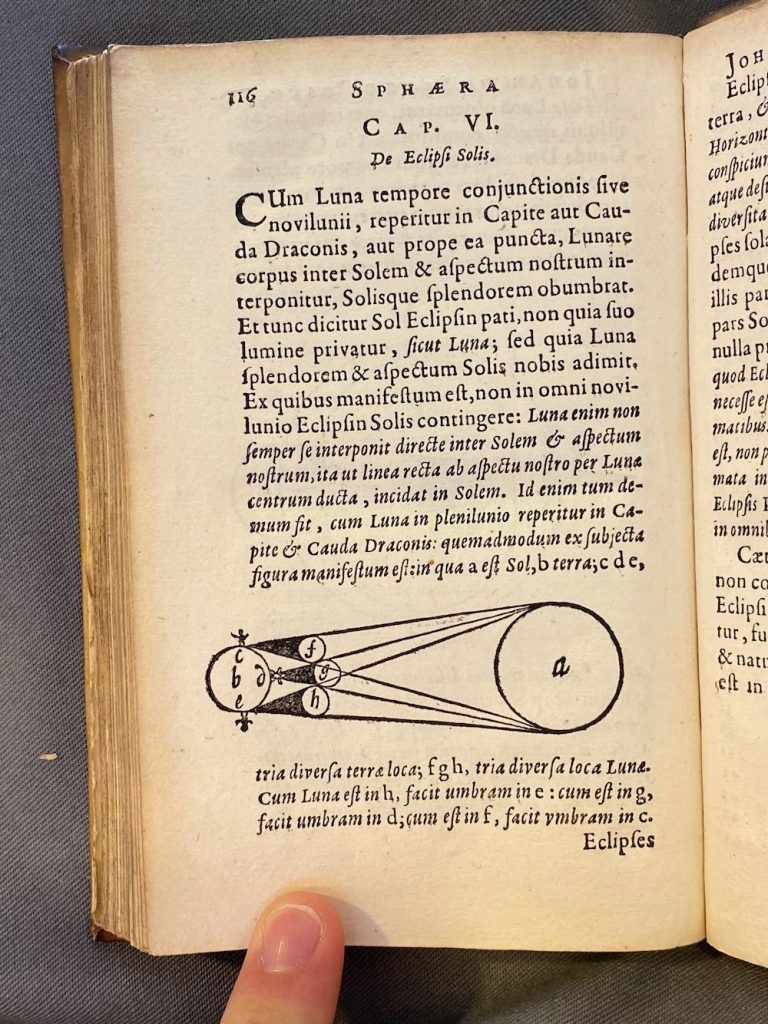
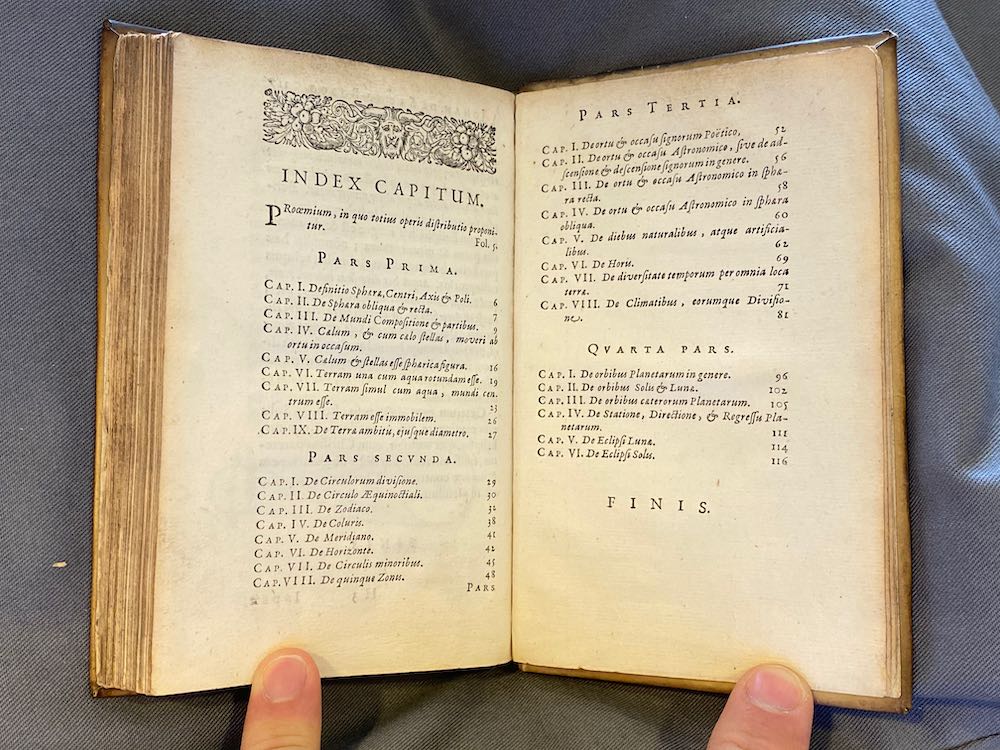
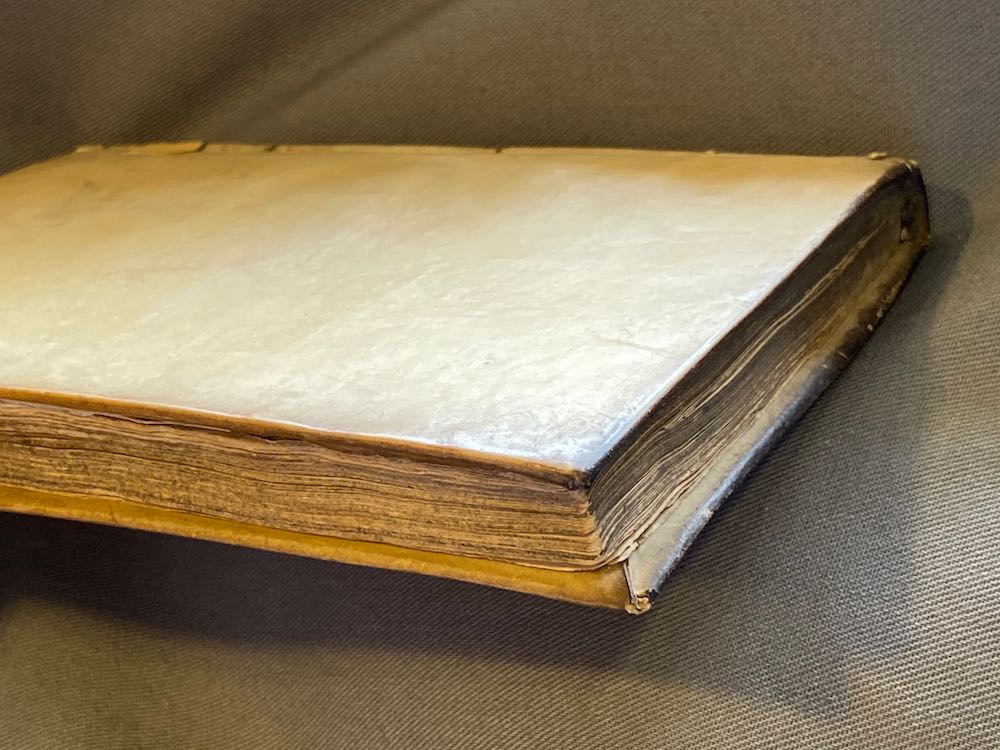
Prachtig boek en ook belangrijk in die tijd. Tot er een nog betere waarheid kwam was dit een handboek op vele universiteiten. De illustratie hieronder is 110 jaar ouder dan die daar weer onder staat. De eenvoud van die onderste vind ik fenomenaal. Die recentere is wellicht strakker, maar het simplistische van een nieuw concept in die tijd komt mooi tot zijn recht in de houtsnede.
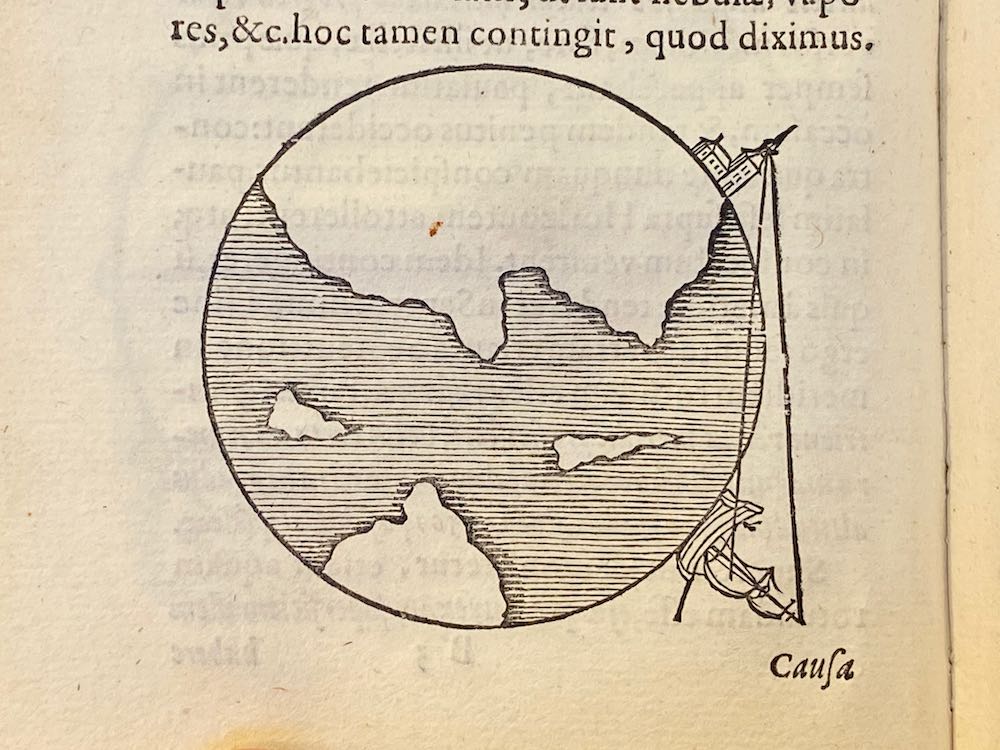
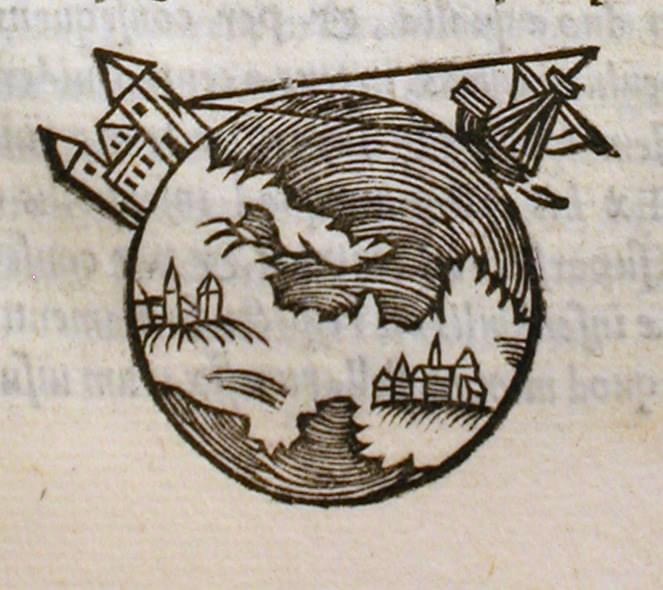
Ik ben hier verder ingedoken en heb op Google Books en andere bronnen ruim 25 verschillende edities gevonden van dit boek: En dat leverde mooie resultaten op: Klik om naar de volledige versie op Google Books te gaan. (Inmiddels een andere bron gevonden met zo’n 359 versies online op chronologische volgorde; dikke dank u !) Of zie de gevonden varianten onder de lijst. (Dit was mijn lijstje op basis van gevonden versies, maar er blijkt een database te zijn met 359 varianten, wat verderop op deze pagina.)
1425
1486
1488
1489
1490 / 1490
1494
1500
1501
1509
1513
1514
1519 / 1519
1520
1522
1524
1526
1539
1545
1546
1549
1550
1558
1561
1562
1567
1573
1578
1593
1594
1601
1606
1620
1626
1635
1639
1647
1656
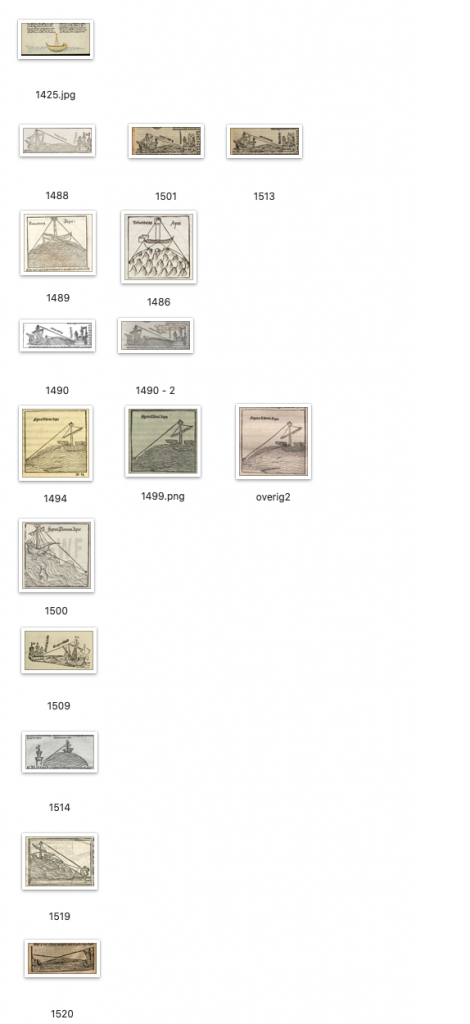
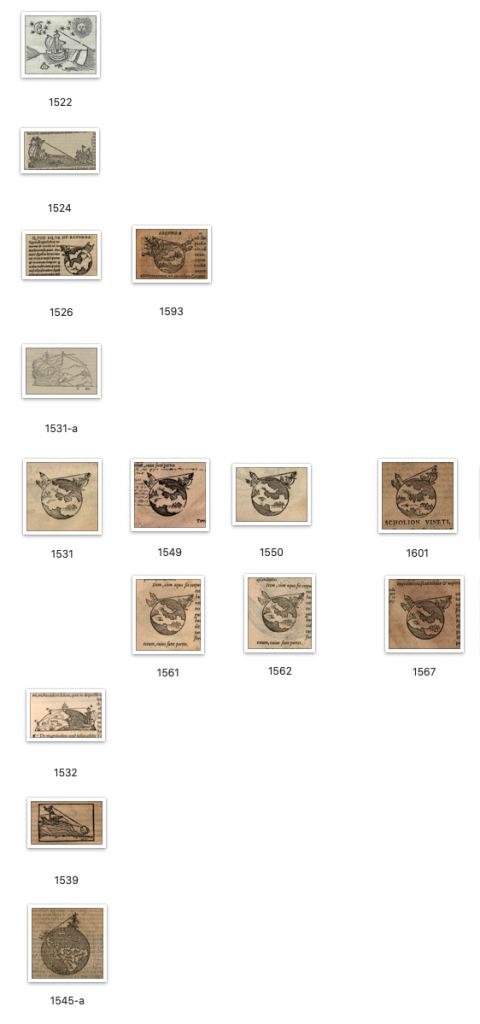
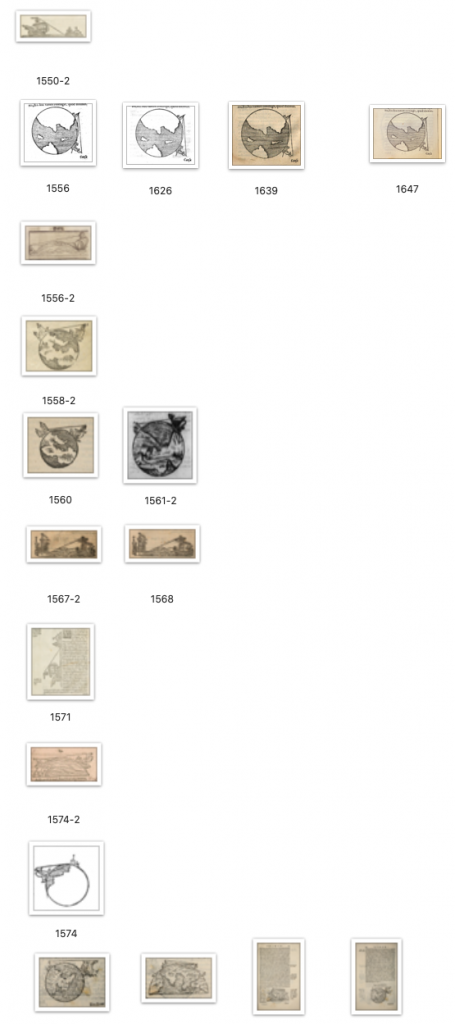
De pagina wordt wat rommelig, maar doet wat ie moet doen: deze mooie (mislukte) concept illustraties tonen. Na het verzamelde overzicht, nu de belangrijkste 19 varianten: “Interpretation is the mother of all fuck-ups” > Johannes was er niet meer, zijn concept best vernieuwend, de uitgevers deden ieder hun eigen ding en de houtblok-, en kopergravure-illustrators konden gutsen, maar hadden niet per se verband van ‘astronomie’ (of in dit geval een vroege voorloper ervan). Dan krijg je zoiets: De meesten kloppen gewoon niet of zijn raar, maar ja, we zijn inmiddels 500 jaar verder…
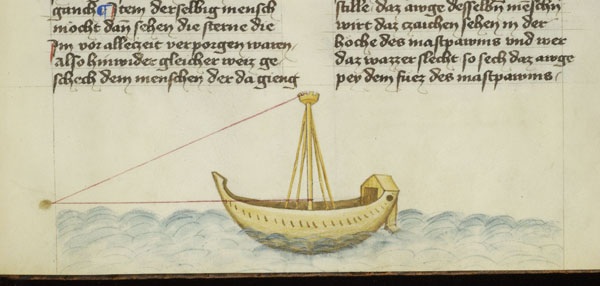
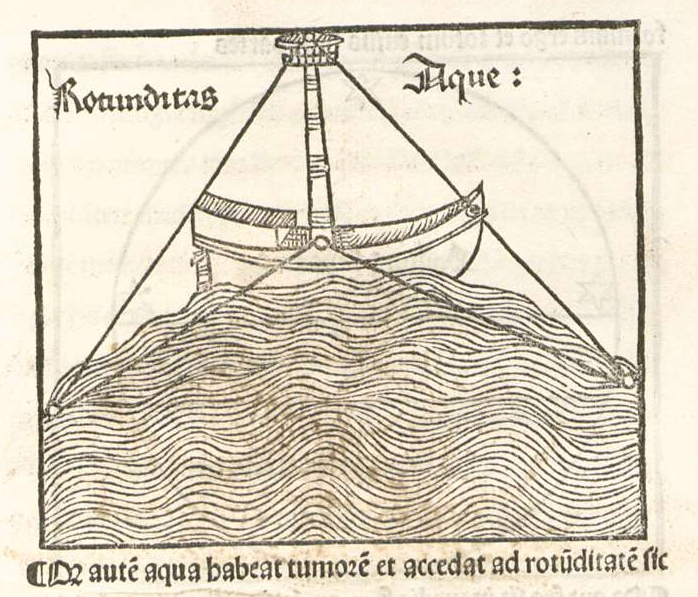
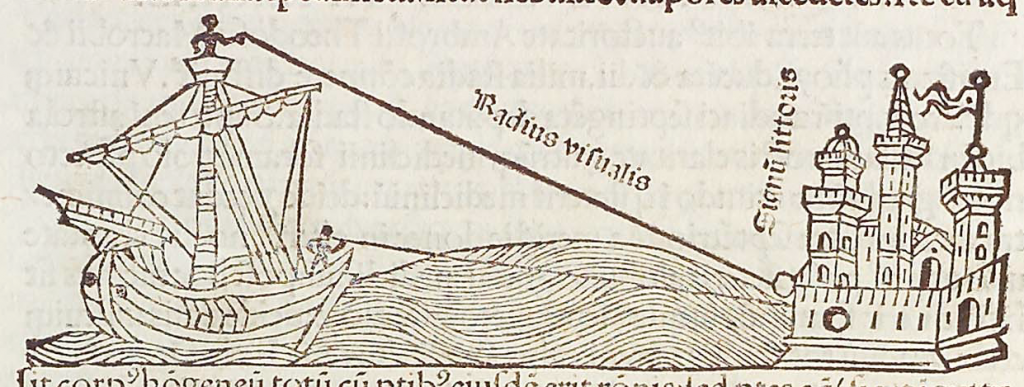
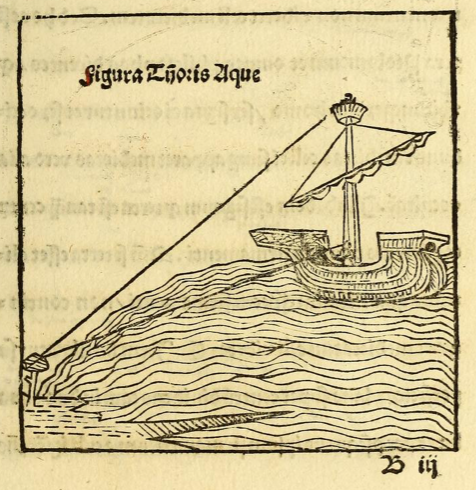
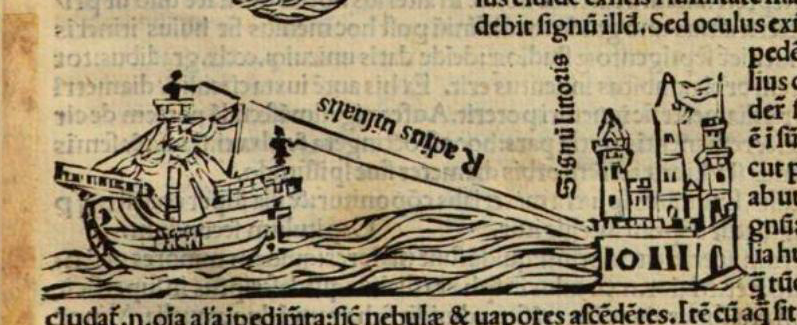
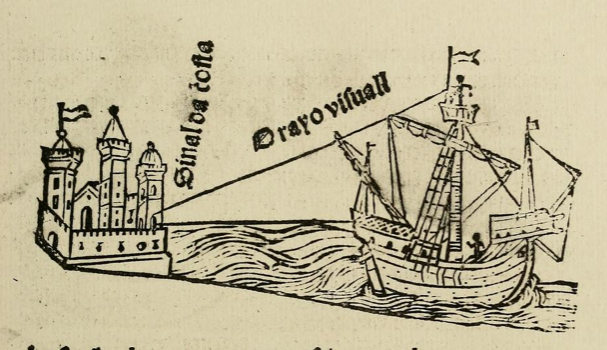
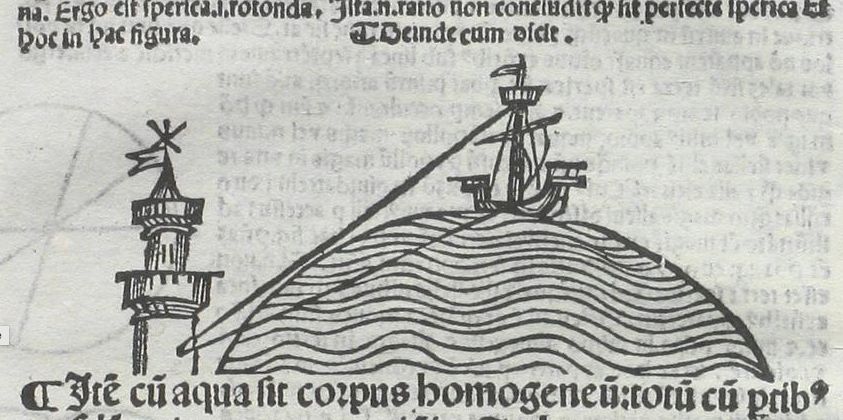
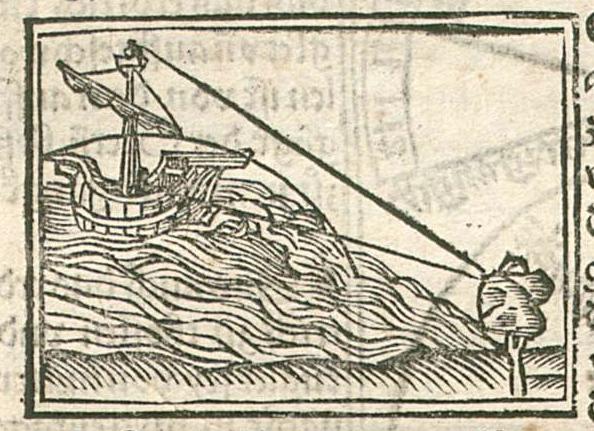
1519 – Een hele bijzondere poging… Ook een mislukte: Vanaf een hoge golf is de boom niet te zien want de golf zit ervoor??? Apart… Met name ook omdat het land waar de boom op staat gewoon vlak is…
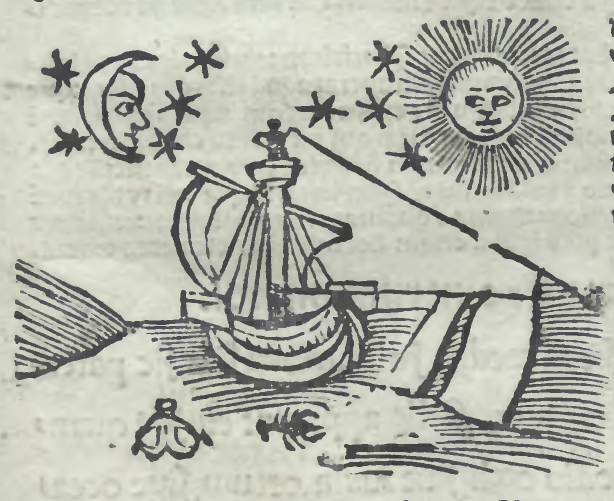
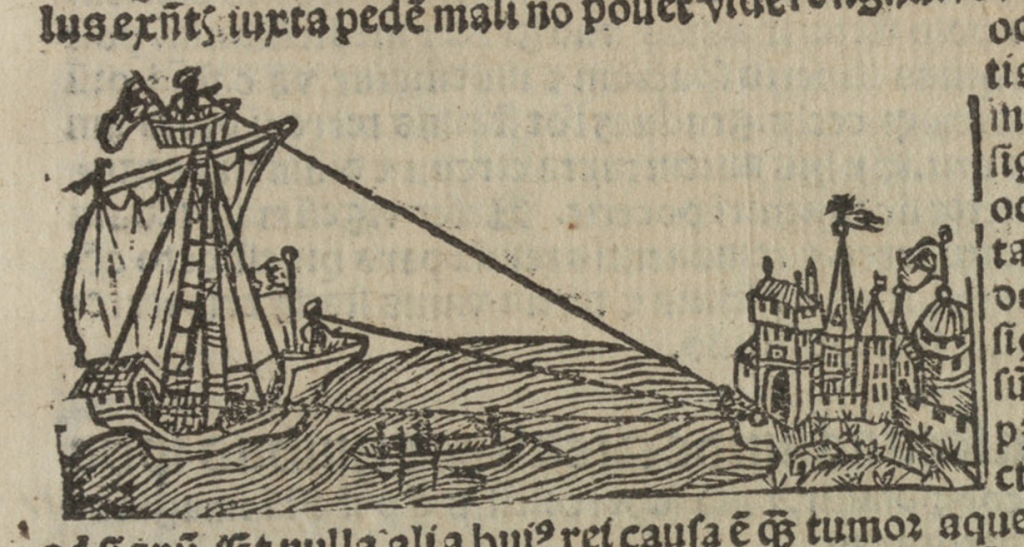
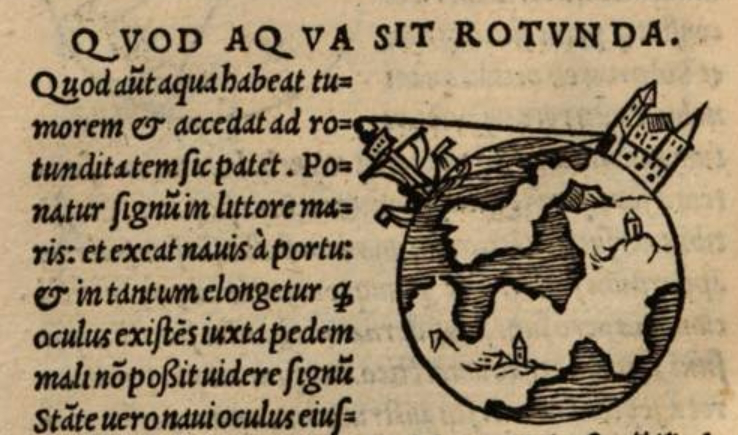
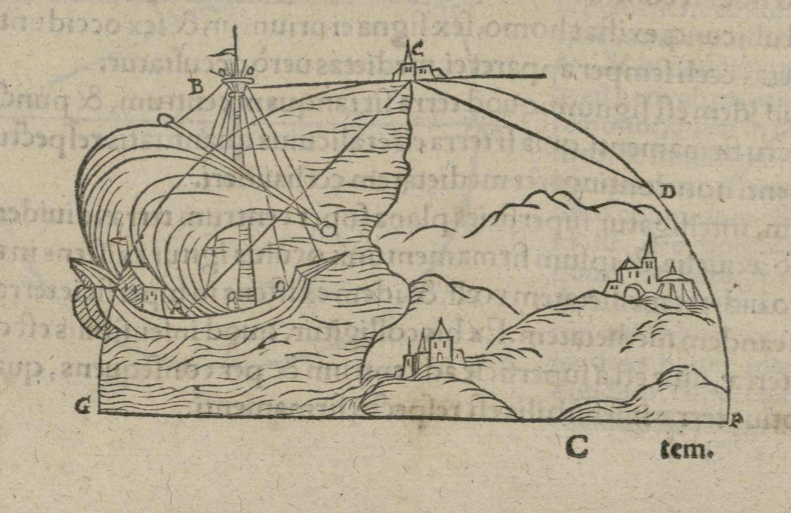
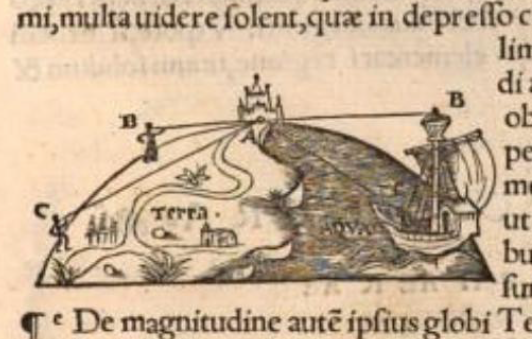

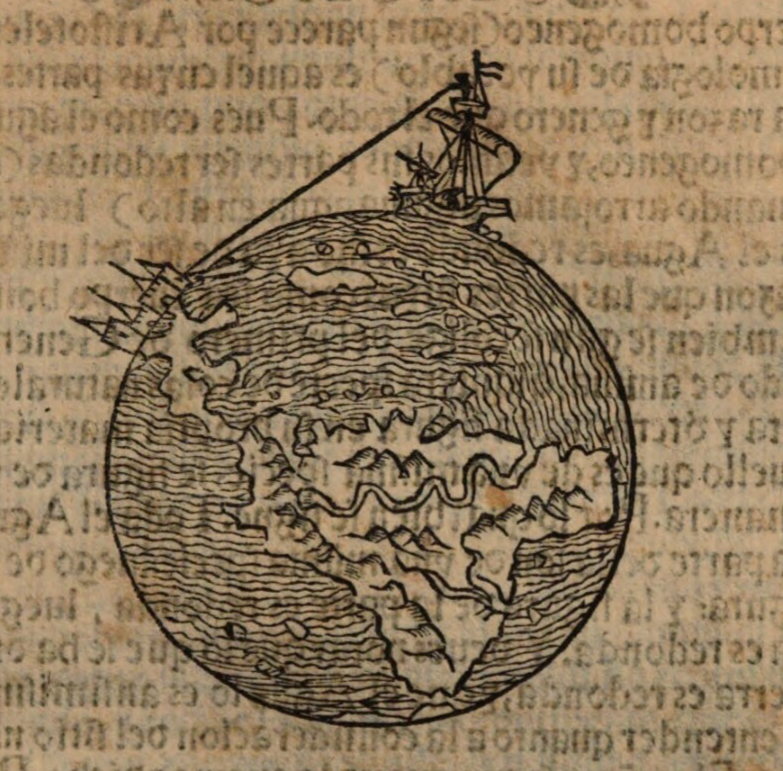
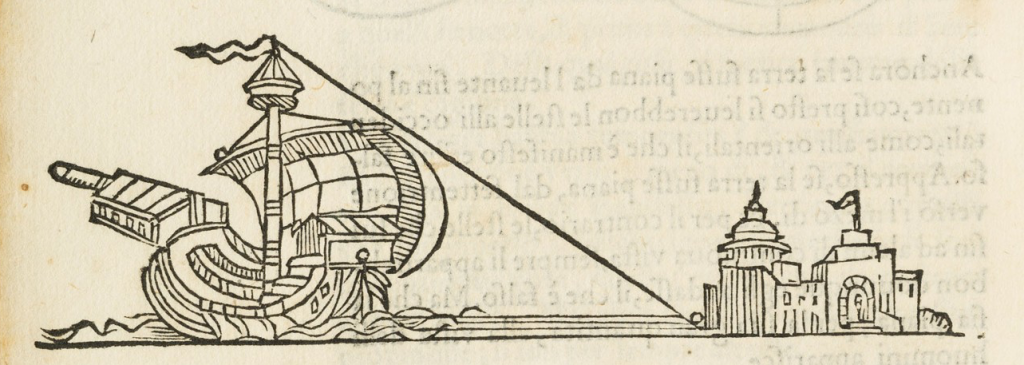
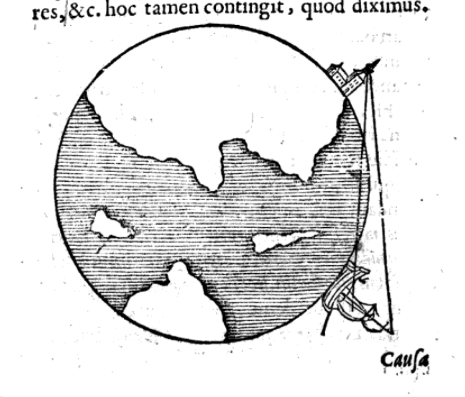
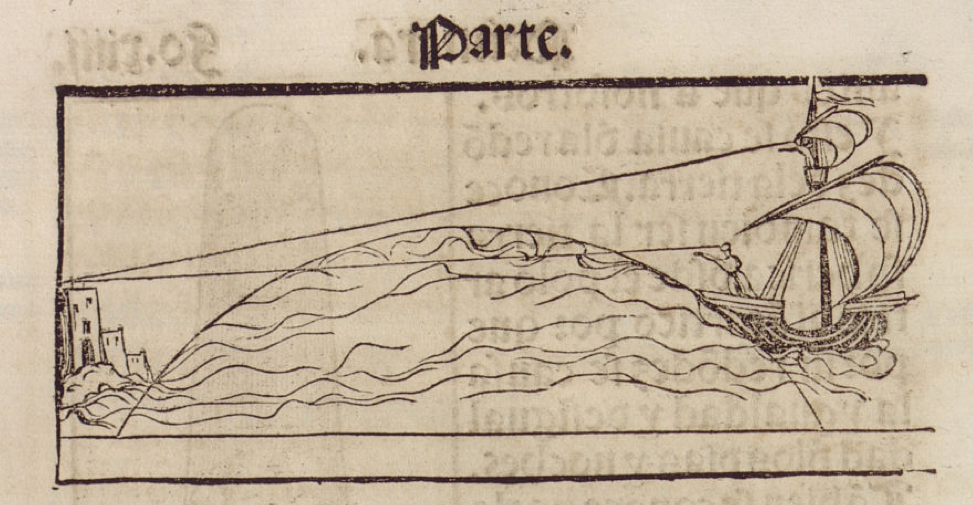
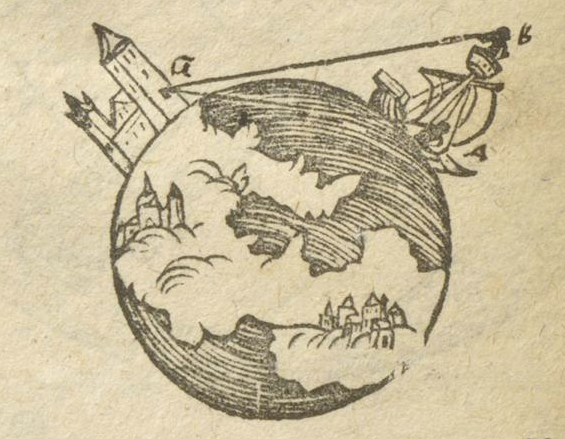
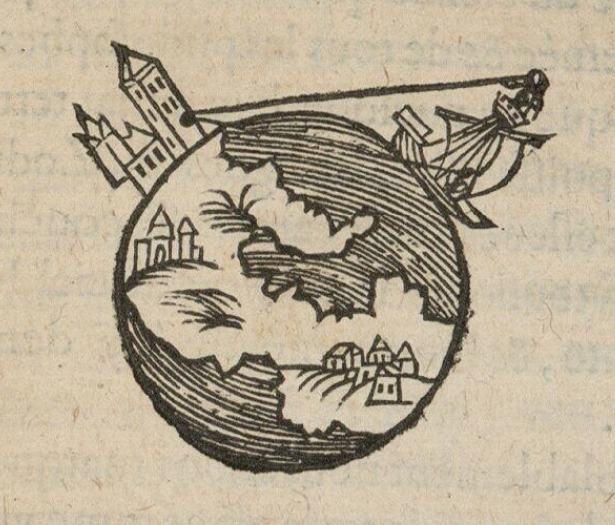
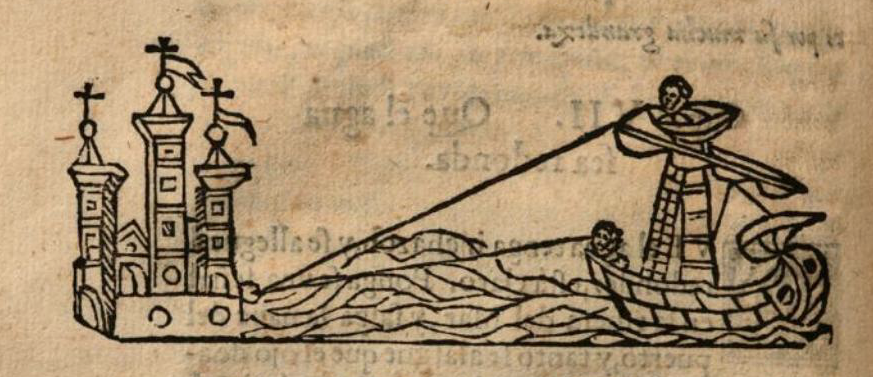
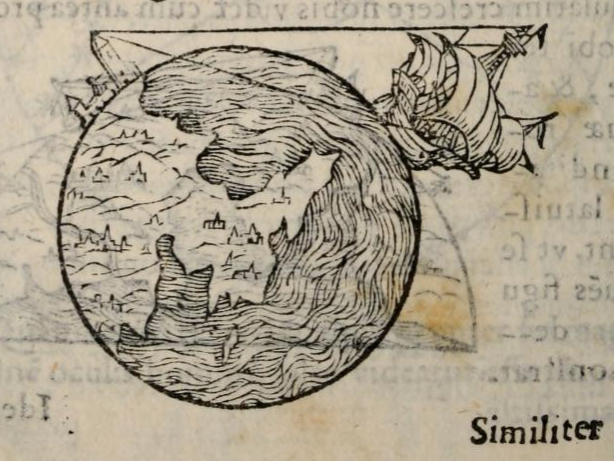
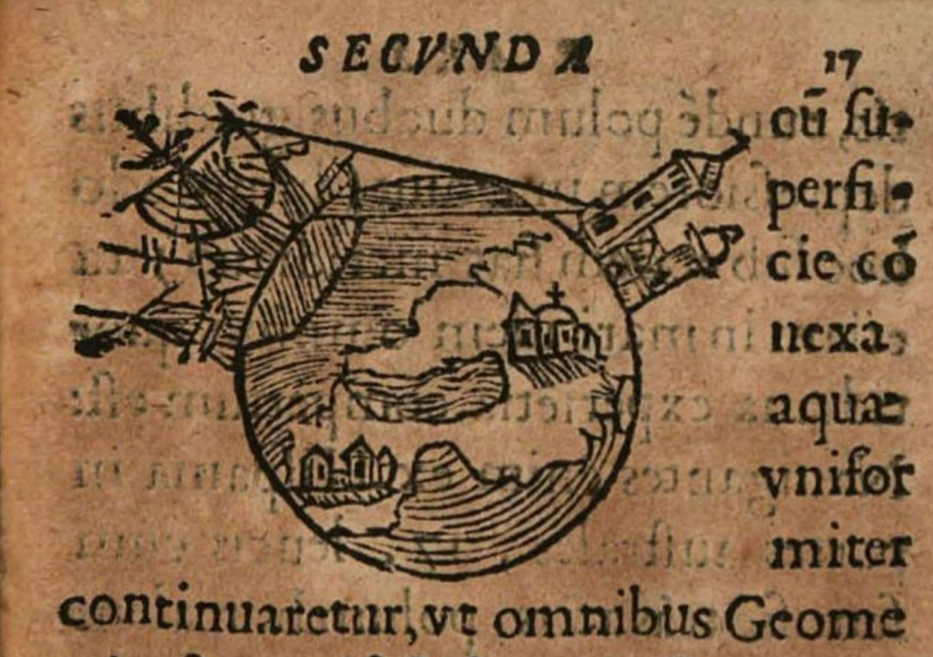
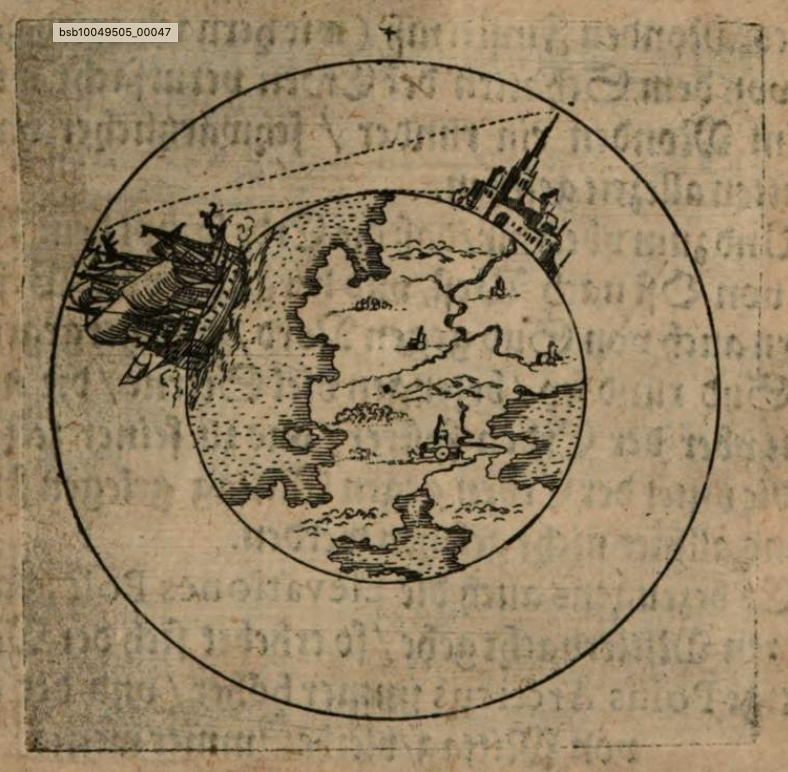
Belangrijke illustratie
In 1585 zie je zelfs twee varianten van dezelfde principe in hetzelfde boek, op twee manieren uitgelegd.
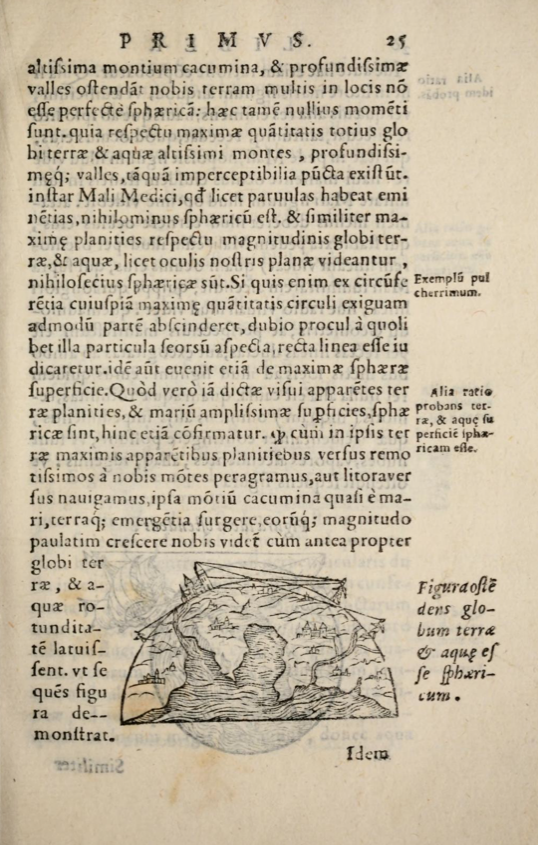
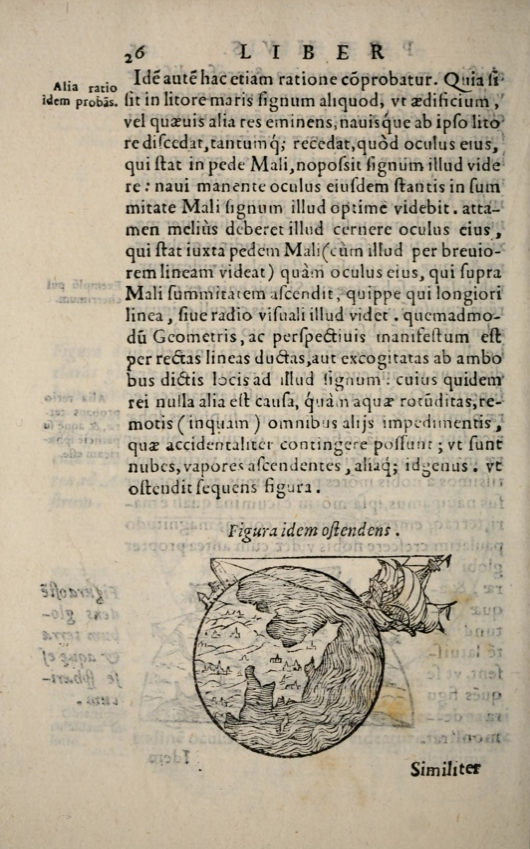
Andere varianten
In Astronomiae Copernicane – 1635 toont Johannes Kepler een variant van deze illustratie:
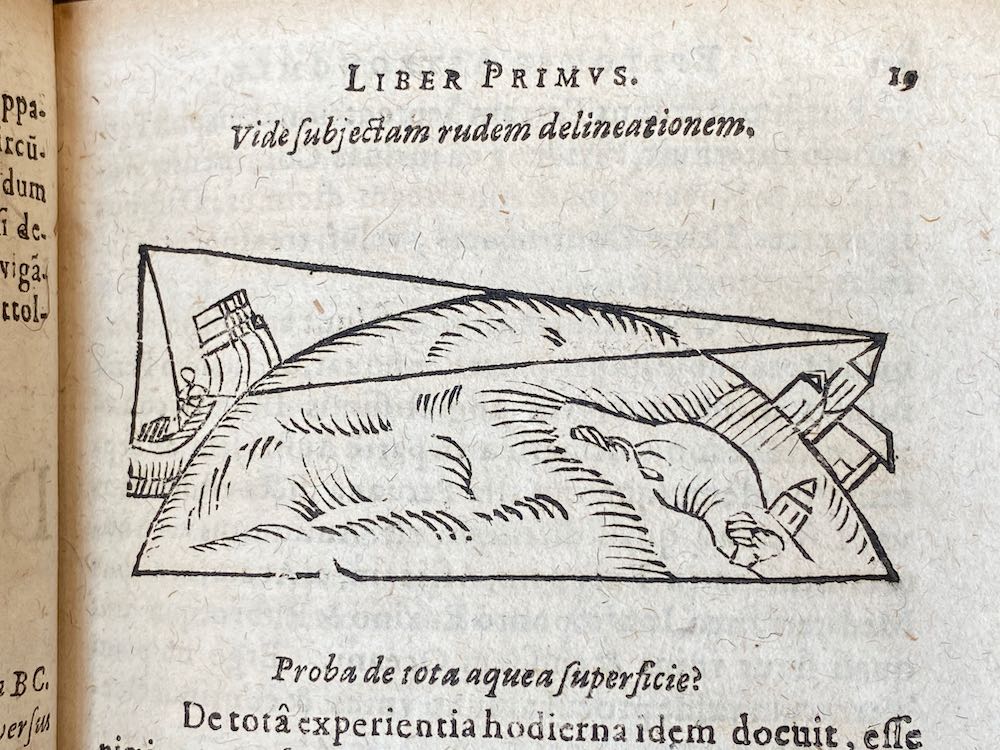
Prachtig om te zien hoe een manuscript honderden jaren overleeft voor het voor het eerst gedrukt wordt. Even fraai om te zien hoe het met deze interpretaties soms helemaal fout gaat. Eigenlijk is alleen de 3e (uit 1531) echt helder om het concept uit te leggen en ook meteen de mooiste. Blij met dit kleine onderzoekje.
Voor ik dit boek kon inzien had ik Sacrobosco als ‘astronoom’ al uitgelicht.
Bekijk de andere boeken die ik in mocht zien bij de Universiteits Bibliotheek Leiden. Ze hebben een prachtige collectie die je als lid mag inzien op de afdeling Special Collections.
1499 Editie
Bovenstaand de allerlaatste druk, en hier de oudste druk die ik zelf heb in kunnen zien uit 1499.
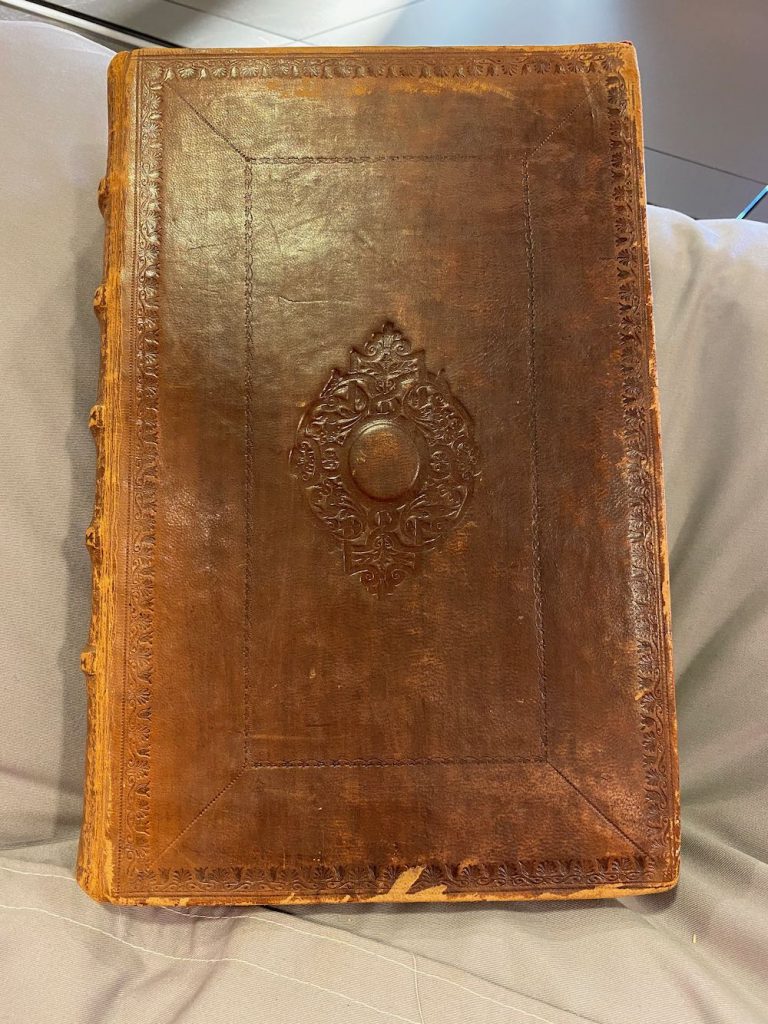
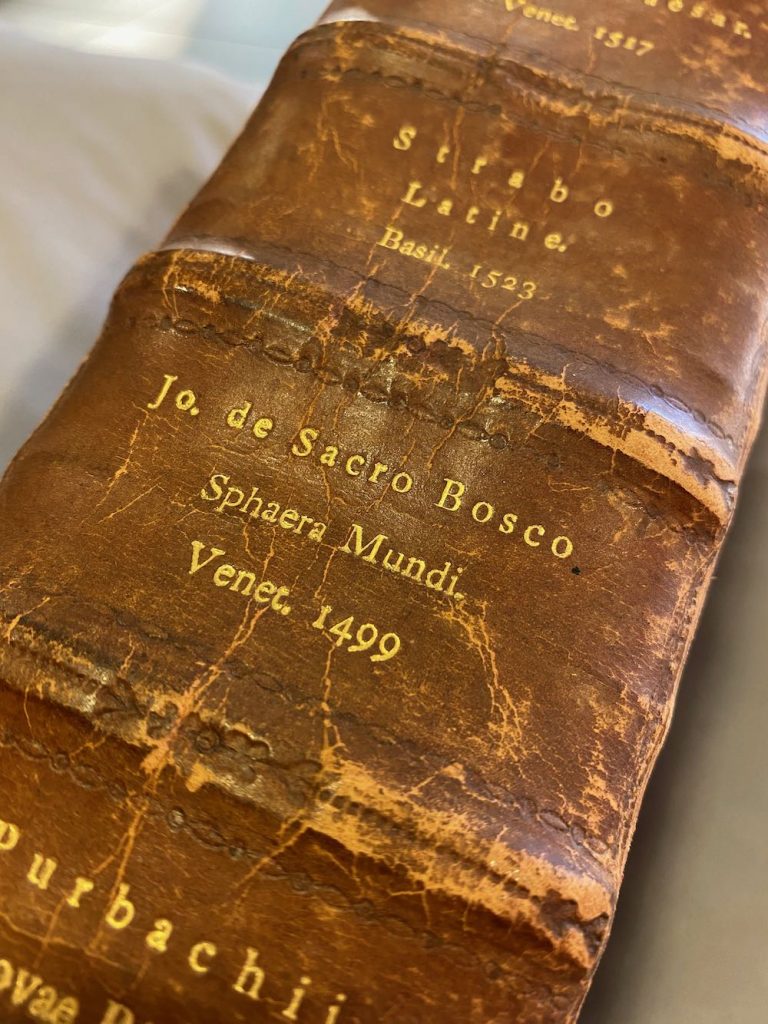
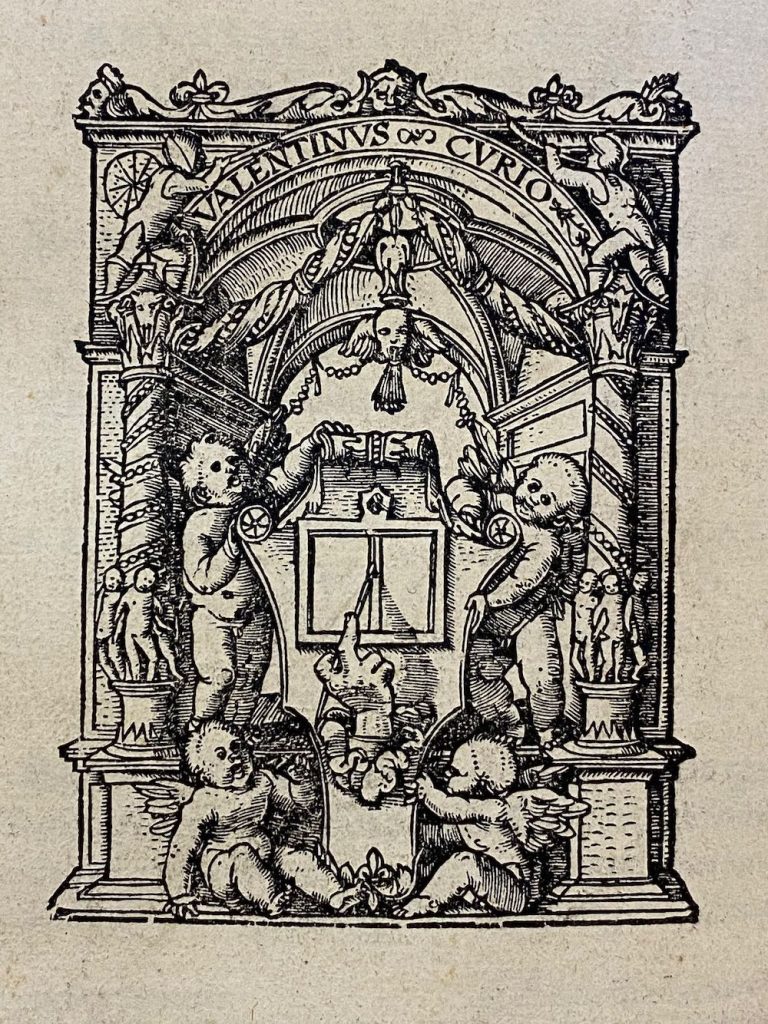
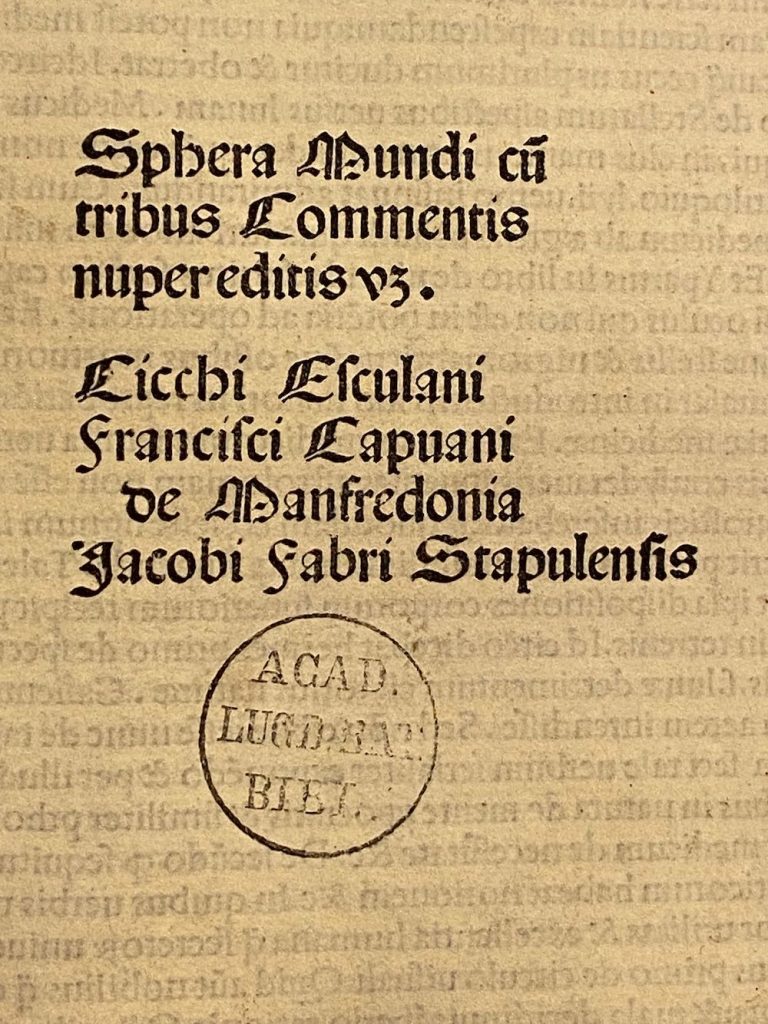
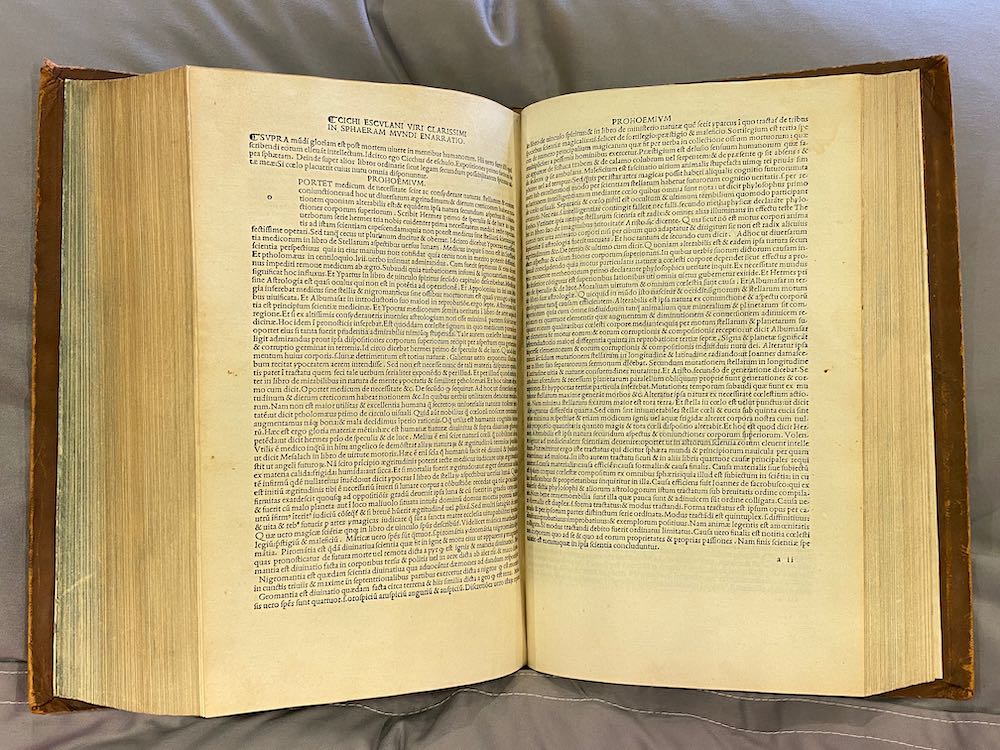
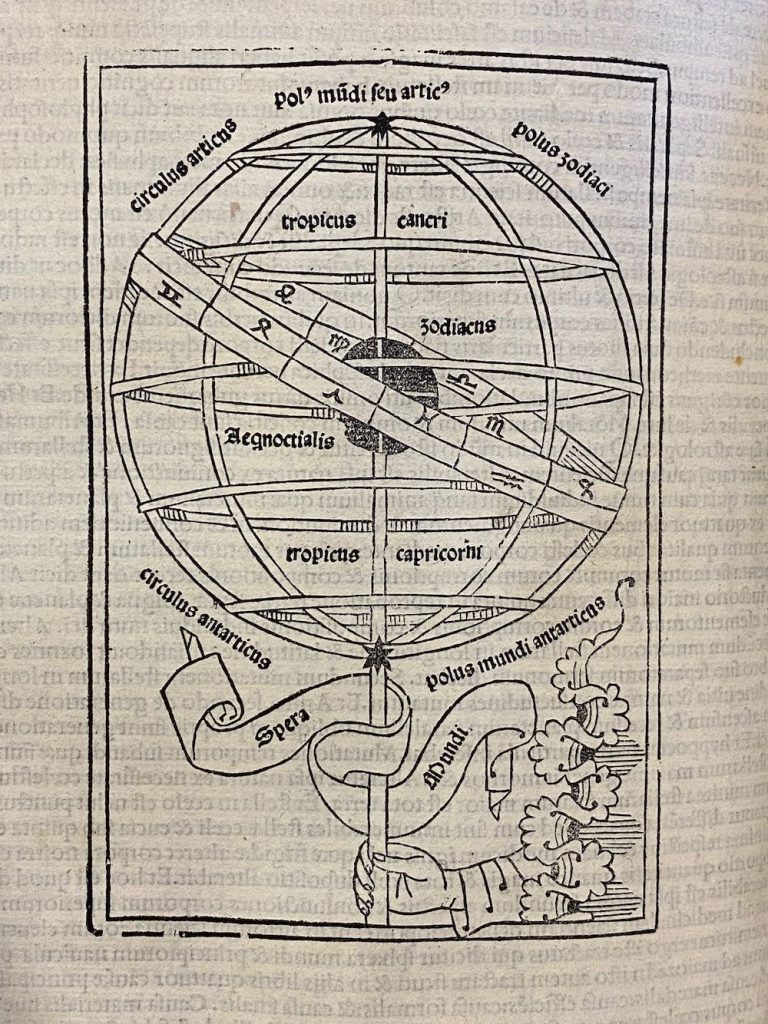
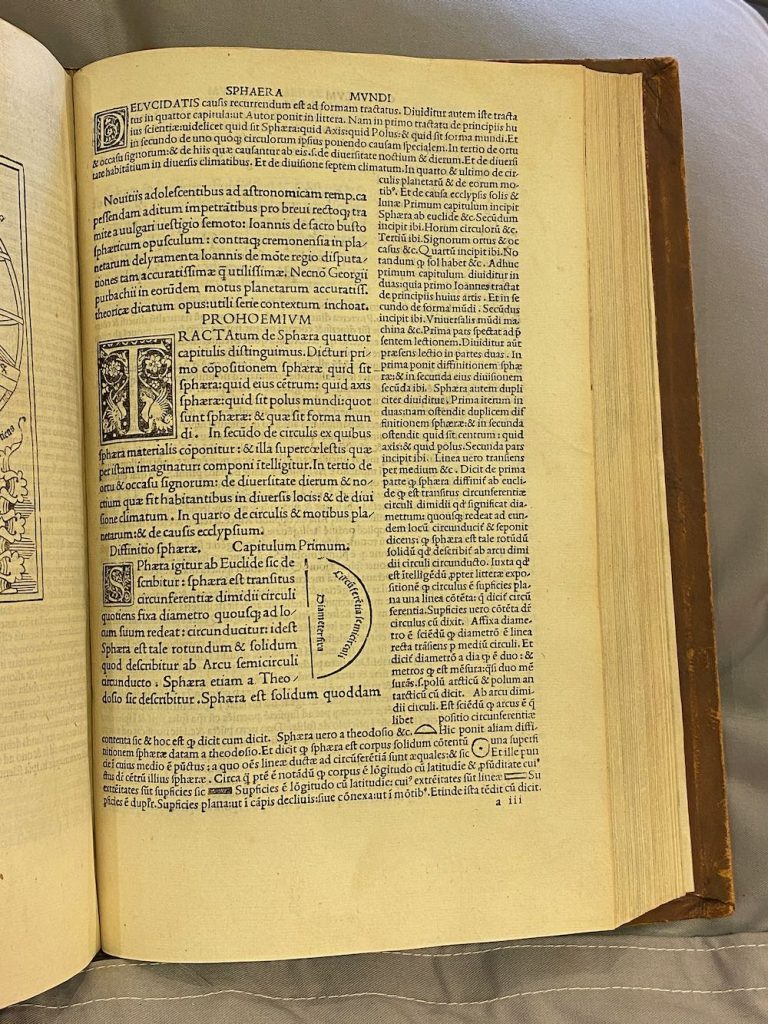
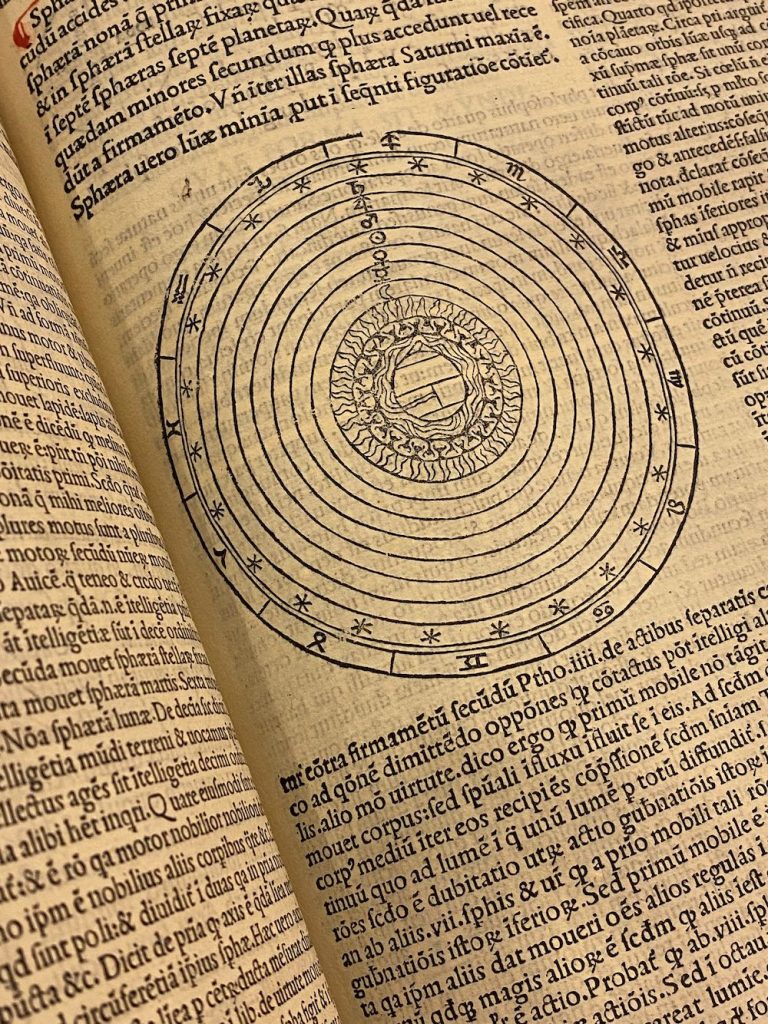
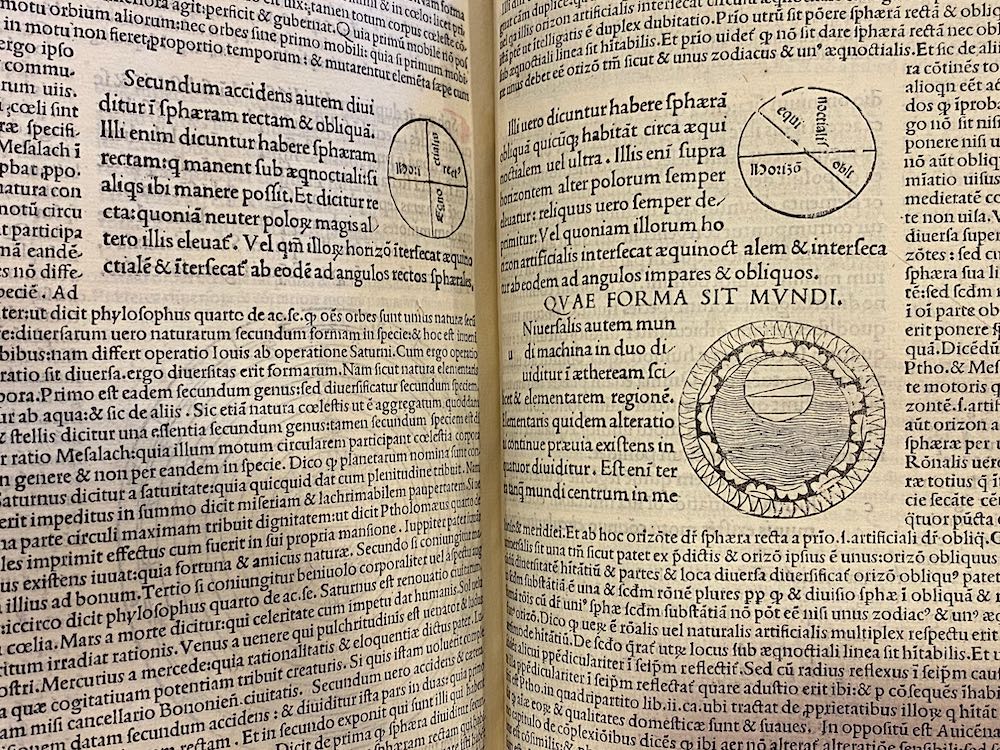
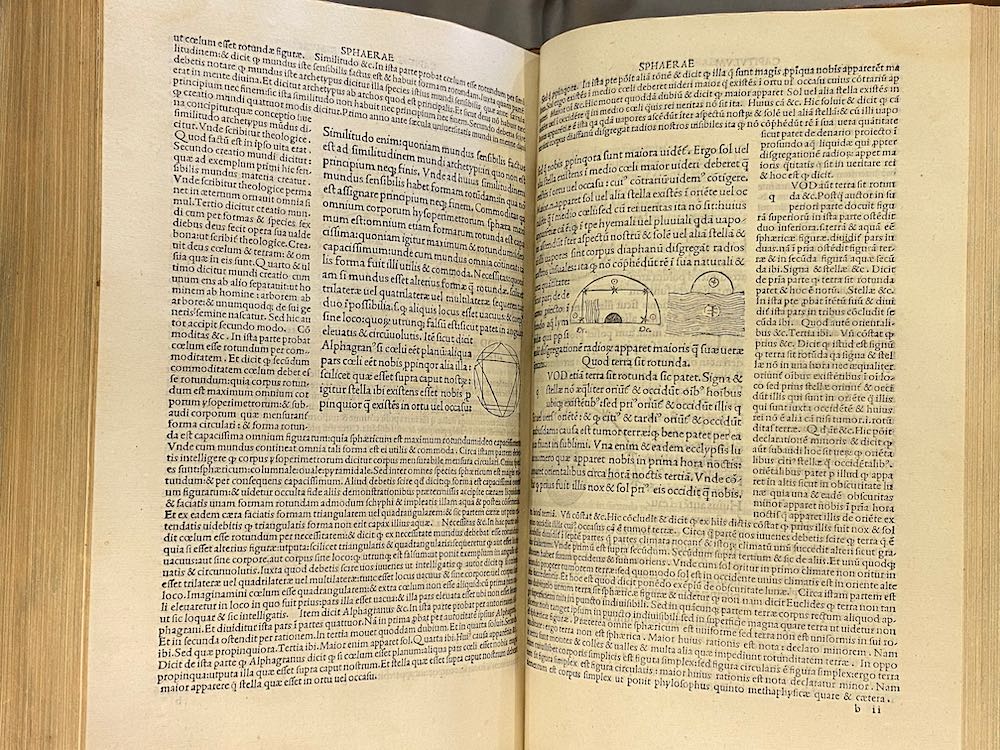
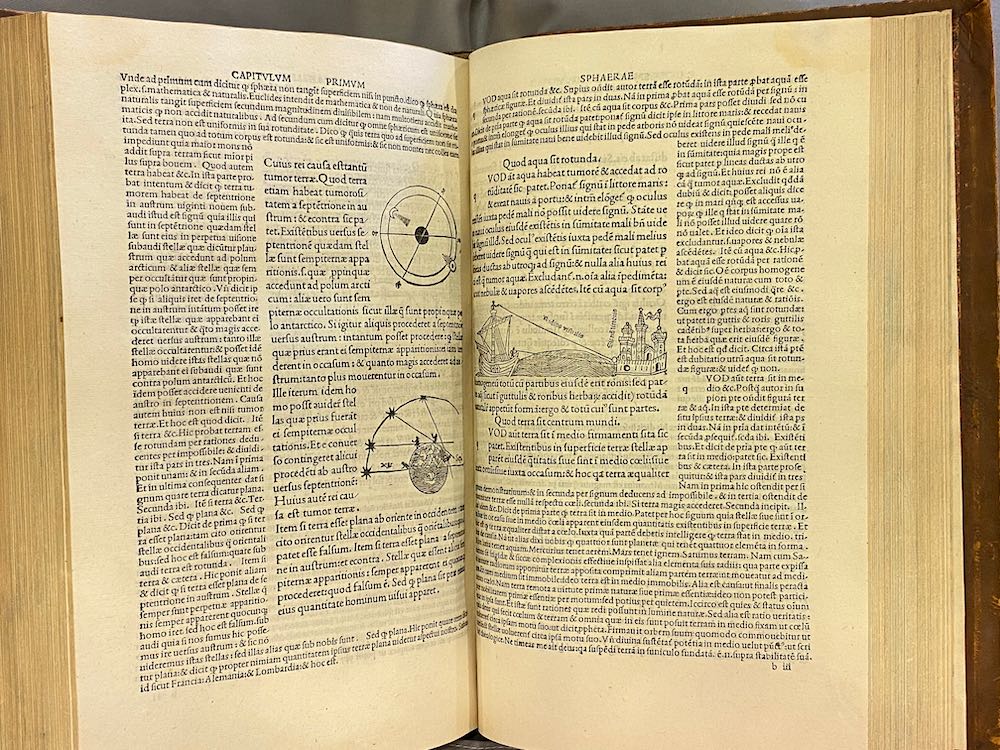
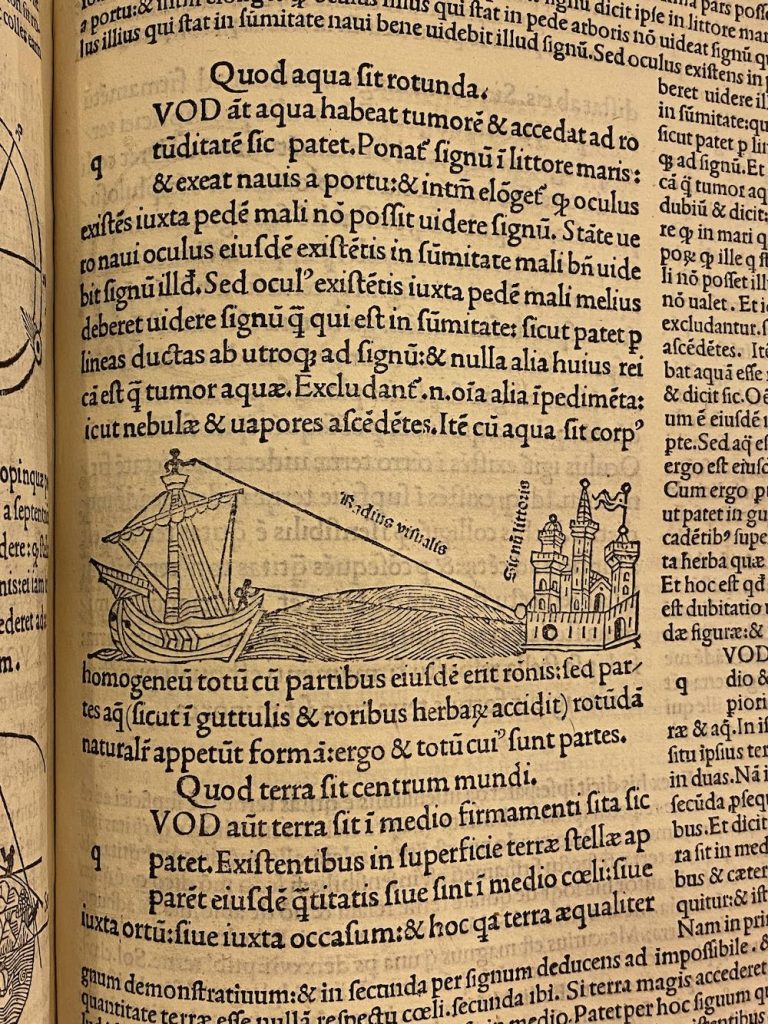
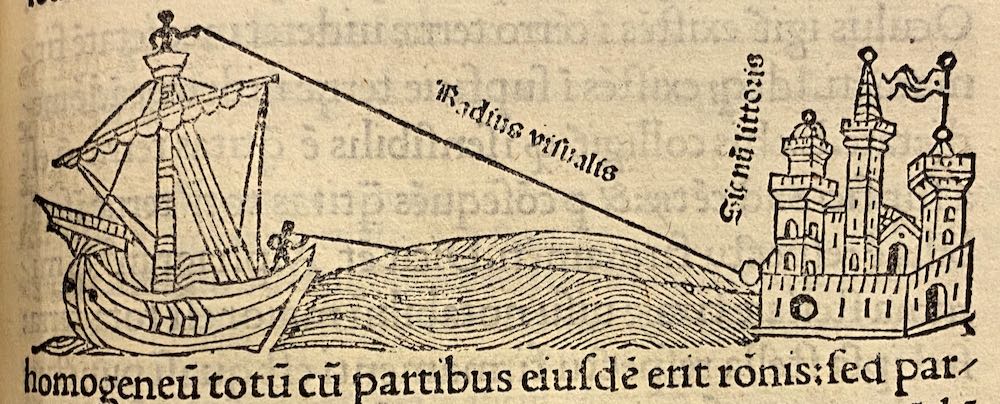
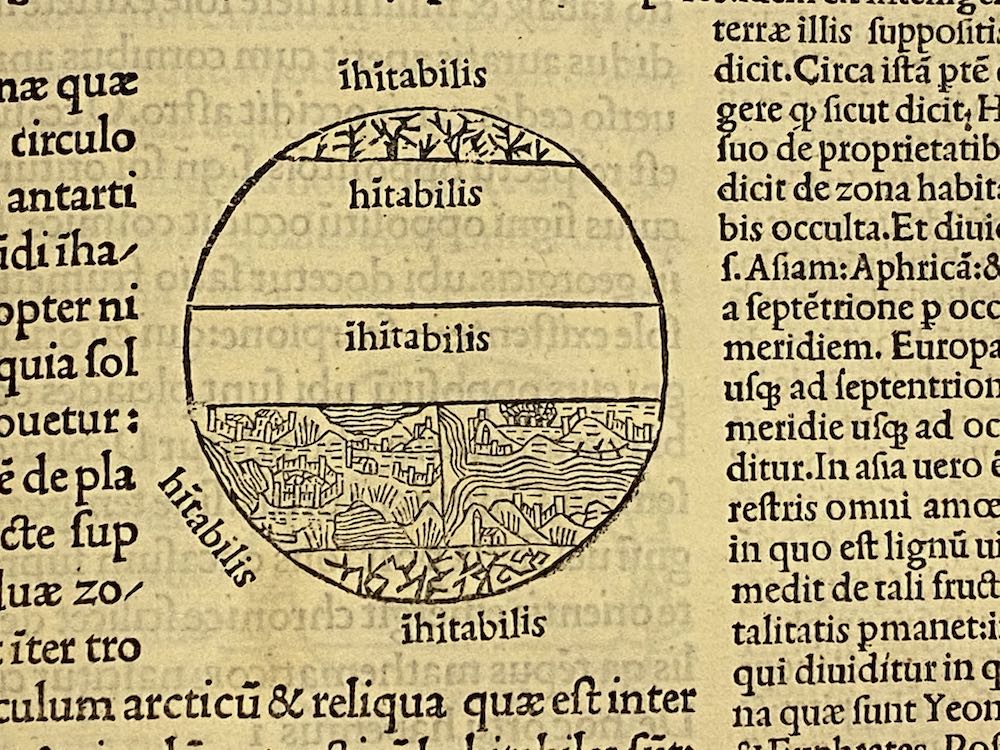
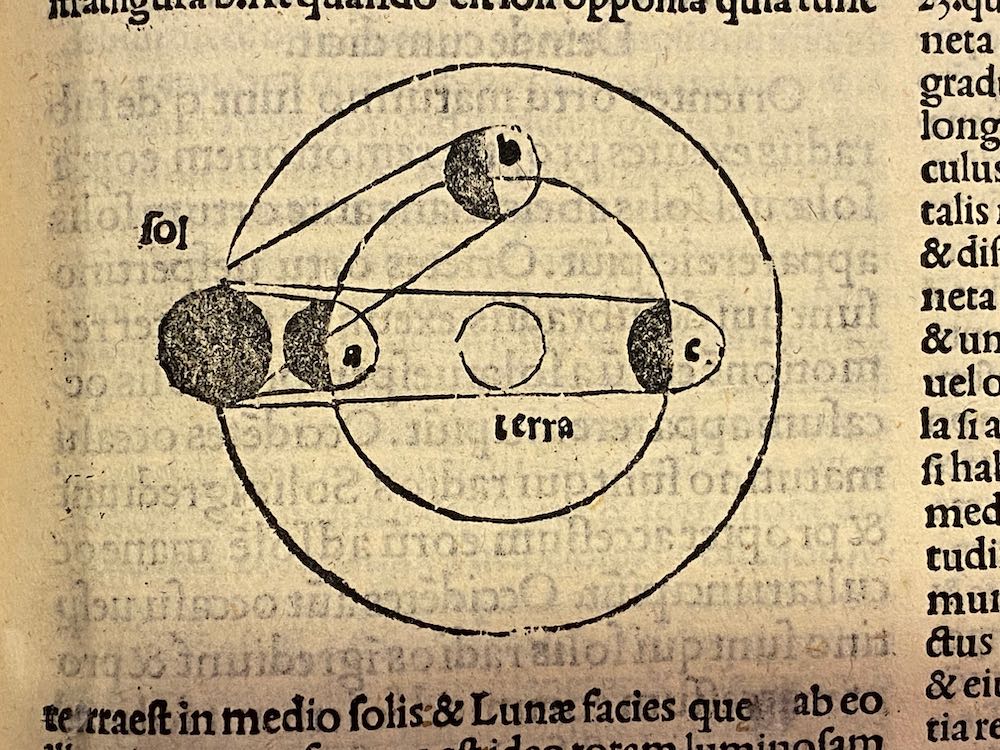
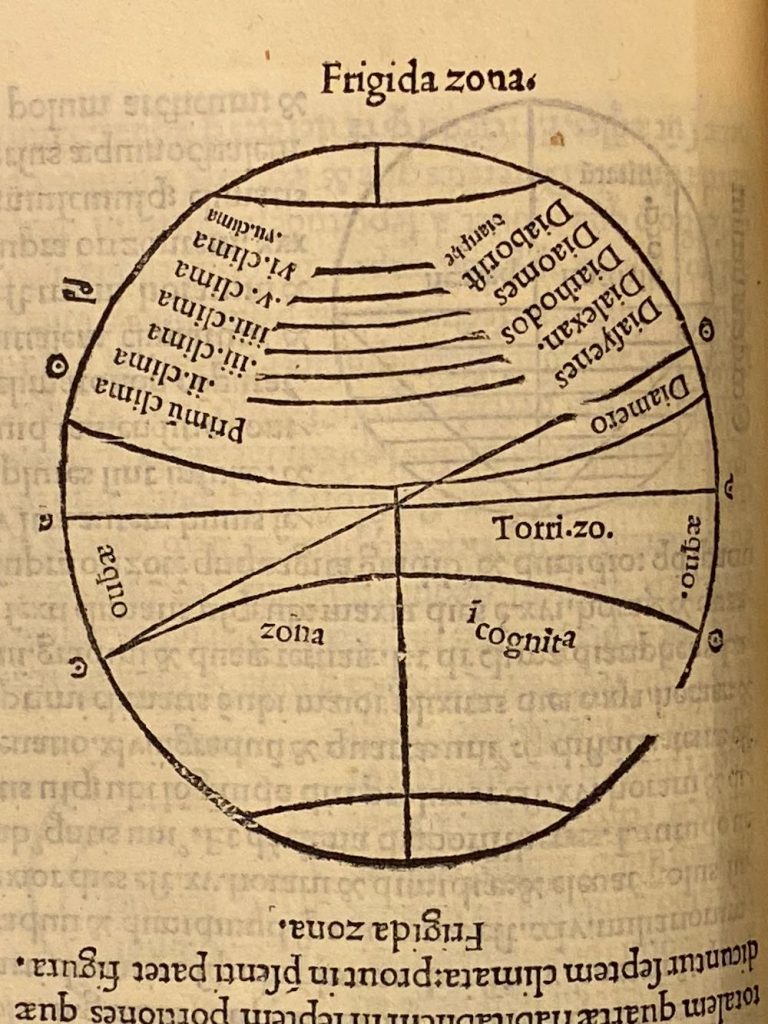
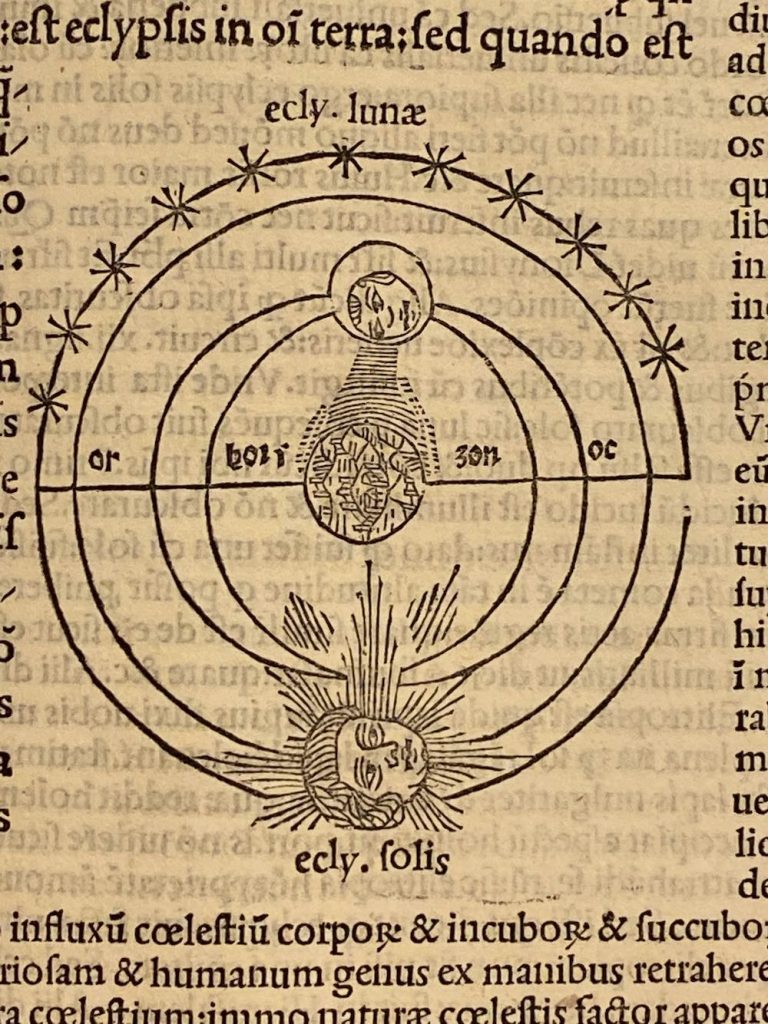
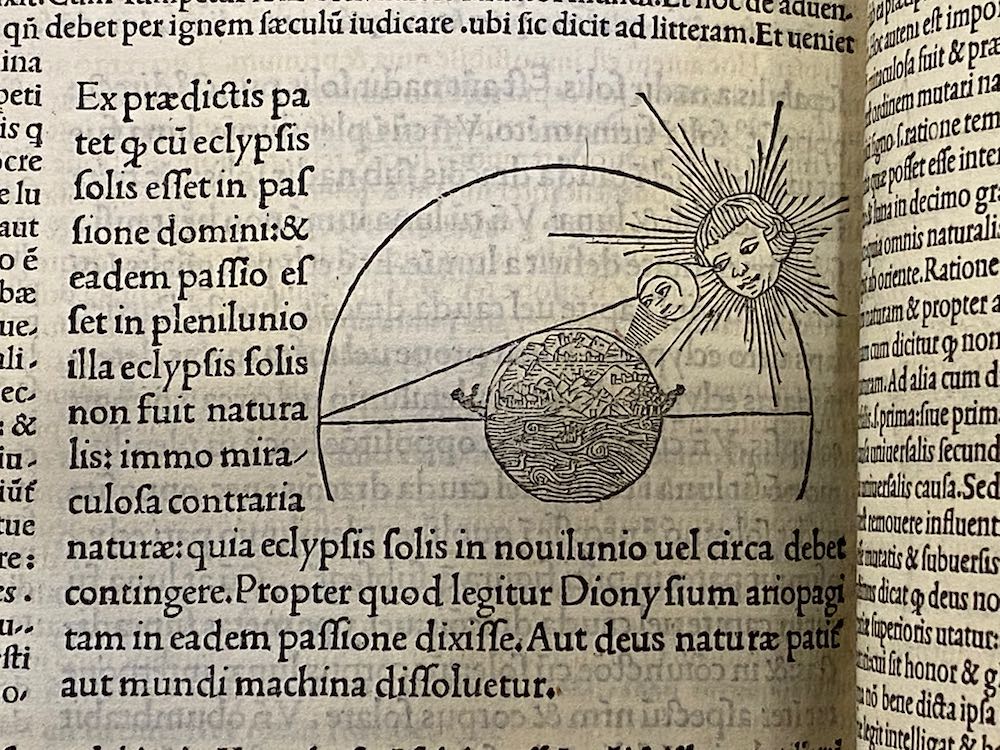
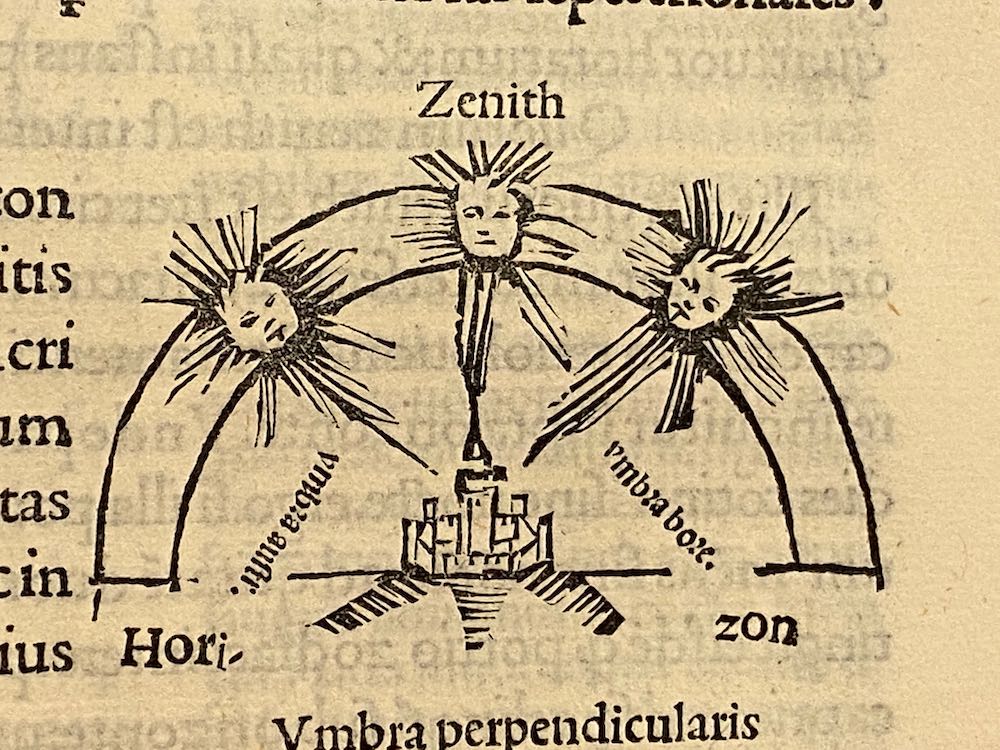
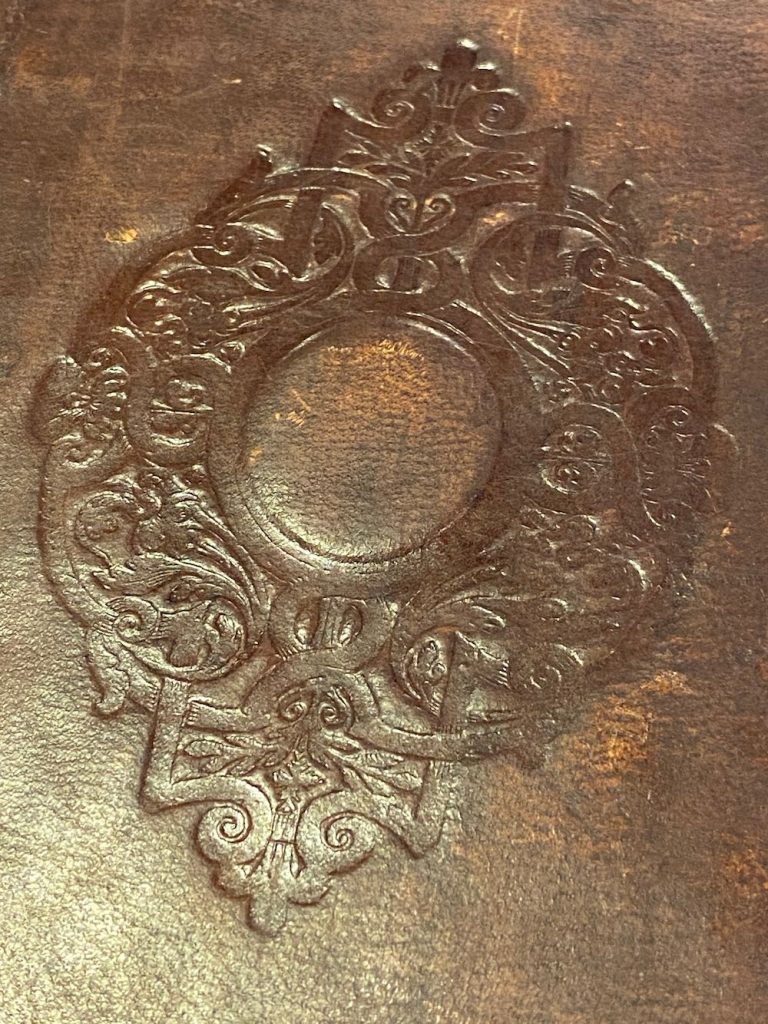
Een andere 1499 editie – Incunabele
Nog een gevonden met bijzonder illustraties, een Incunabele uit de overgangsperiode van manuscript naar drukwerk. Ingevuld met minder fraaie kleuren…
Dit boek komt uit een enorme collectie met boeken van/over de Sphaera Mundi, een prachtig overzicht, waar ik nog een keer doorheen moet…
Nog een overzicht van alle gevonden uitgaven (gedrukt) van dit boek: doorklikbaar om bij de locatie uit te komen… En commentaren op het boek. En een filmpje met uitleg over het boek.
Een Artikel over het boek. En een Nederlandse Wiki pagina. Nog een uitgebreidere. En een uitgebreidere Engelse Versie. En nog een.
Volledige Latijnse tekst uitgeschreven! En – handiger – Een Engelse versie uitgeschreven
Over Sacrobosco. En nog een.
En een mooie 1493 versie zonder illustraties, die een tijd geleden rijkelijk is geïllustreerd door een lezer die een andere editie volledig heeft nagetekend in de kantlijn.
Hier zouden ook veel manuscripten te vinden moeten zijn, maar ik zie niks…
Gevonden Manuscript edities
van voor de boekdrukkunst (van omstreeks 1450)
De eerste versie van Sphaera Mundi stamt uit 1230, ver voor de boekdrukkunst werd uitgevonden. Gelukkig zijn er naast oude drukken ook manuscripten gevonden van het boek. Project Penn University is er behoorlijk actief mee bezig geweest. Op hun Kislak Center is onderzoek gedaan.
Latijns 1256-1270 uit Parijs
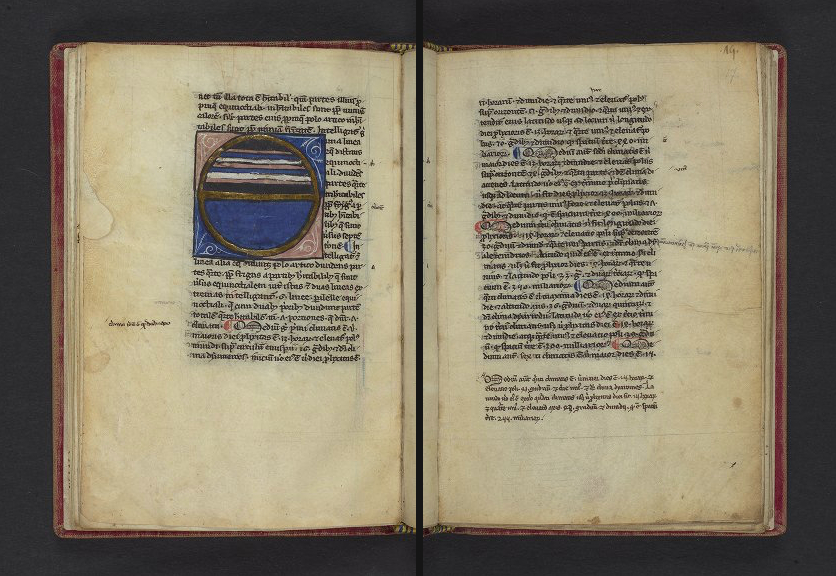
Link naar volledige versie
| Author: | Sacro Bosco, Joannes de, active 1230. |
| Title: | Tractatum de spera … [etc.] [manuscript].Sphaera mundi |
| Origin: | [Paris?, between 1256 and 1270] |
| Physical description: | 58 leaves : parchment, col. ill. ; 165 x 110 (97 x 59) mm. bound to 171 x 120 mm. |
| Summary: | Collection of three scientific works, nearly contemporary with the life of the author: one work on cosmology and astronomy, one on arithmetic, and one on the division of time according to the movements of the sun and moon. The first work originally followed the second and third, and the beginning of the second work is missing. |
| Notes: | Ms. codex.Title from incipit (f. 1r).Foliation: Parchment, i (modern parchment) + 58 + i (modern parchment); 1⁸(-1) 2¹² 3⁸(-2) 4⁸(-1) 5⁸(-1) 6⁶ 7⁸ 8⁶(-1); contemporary foliation in ink, [59], 60-77, 3-44, [45], upper right recto, many trimmed; modern foliation in pencil, [1-45, 45-57], upper right recto. References in this record are to modern foliation. Gatherings 3-7 have framed horizontal catchwords, lower right verso (f. 25v, 32v leading to a missing leaf, 39v, 45v, 52v).Layout: Written in 26 long lines; frame-ruled in lead with double bounding lines (2 double bounding lines in outer margins).Script: Written in Gothic book script by a single hand.Decoration: 3 8-line historiated initials related stylistically to those of the Bari workshop showing the author teaching astronomy to 2 students, all tonsured (f. 1r, 29r, 43v); 7 illustrations including a diagram of the zones of the earth (painted, f. 16v); diagrams of the movements of the sun and moon around the earth and lunar and solar eclipses (colored drawings, f. 18r, 19r, 19v); a circular image of a serpent biting its tail (painted, f. 36r); a table of solar conjunctions (painted, f. 40r); and an image of circles surrounding a flower (painted, f. 55v); first lines next to historiated initials in ornamented display uncials (f. 1r, 29r); 2-line initials in red or blue with penwork infilling and marginal extensions in red and blue; rubrics in red gothic script or black chancery script; paragraph marks in red or blue.Binding: Modern velvet.Origin: Probably written in Paris between 1256 and 1270. |
| Cite as: | LJS 216 |
| Manuscript location: | Kislak Center for Special Collections, Rare Books and Manuscripts University of Pennsylvania LJS 216 |
Tractatum de Sphaera (1230-1275)
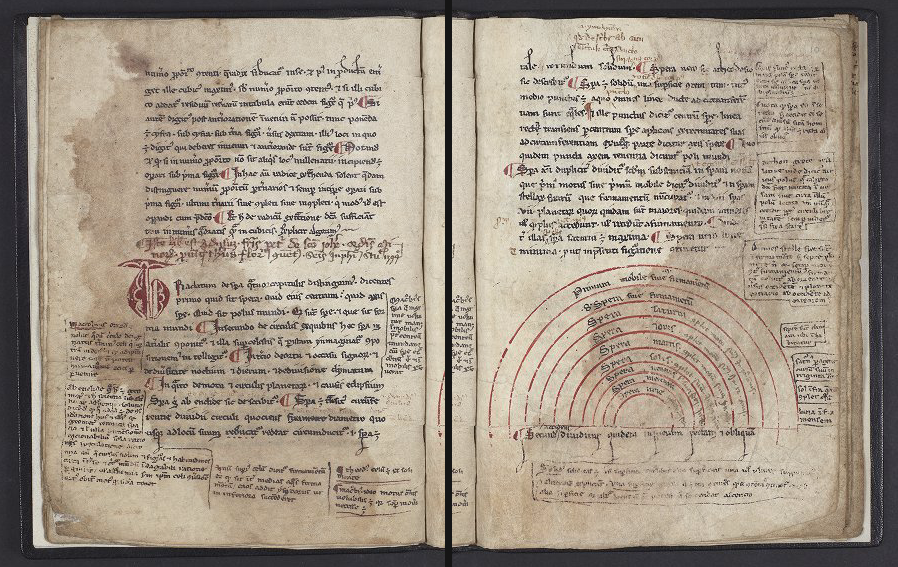
| Author: | Sacro Bosco, Joannes de, active 1230. |
| Title: | Algorismus ; Tractatum de sphaera. |
| Origin: | [Italy, between 1225 and 1275] |
| Physical description: | 30 leaves : parchment, ill. ; 182 x 128-130 (128 x 85) mm. bound to 188 x 138 mm. |
| Summary: | Treatise on the fundamentals of arithmetic (Algorismus), followed by a treatise on cosmography that describes and illustrates the Ptolemaic model of a spherical earth divided into climactic zones at the center of the concentric spheres of the universe. The second treatise has marginal notes in the same ink and possibly hand as the text, as well as notes in a later cursive hand in faint ink and a bifolium written in this later hand bound in (f. 23-24). |
| Notes: | Ms. codex.Title for manuscript from caption title of first work and incipit of second work (f. 1r, 9v); second work is also known as Sphaera mundi.Foliation: Parchment, 30; [1-30] ; modern foliation in pencil, upper right recto.Layout: Written in 25-26 lines; prickings visible on many leaves.Script: Written in Gothic script.Decoration: 7 astronomical diagrams in black and red ink (f. 10r, 12r, 12v, 25v, 28r, 28v, 29r), 2 astronomical diagrams in black ink (f. 29v, 30r), and 2 illustrations in red and black ink (f. 13r), all in second work; 2-line initial in red and blue with faded penwork extensions (f. 1r); 5-line divided initial in red (f. 9v); caption title (f. 1r) and marginal rubrics in first work (f. 1r-9v) in red, 2-line initials and paragraph marks throughout in red.Binding: 20th-century morocco with gilt (rebound in 1997).Origin: Written in Italy in the mid-13th century. |
| Cite as: | LJS 26 |
| Manuscript location: | Kislak Center for Special Collections, Rare Books and Manuscripts University of Pennsylvania LJS 26 |
Bekijk de volledige versie online; Helaas ontbreekt in deze editie mijn favoriete illustratie… Wel gruwelijk blij met deze online vondst.
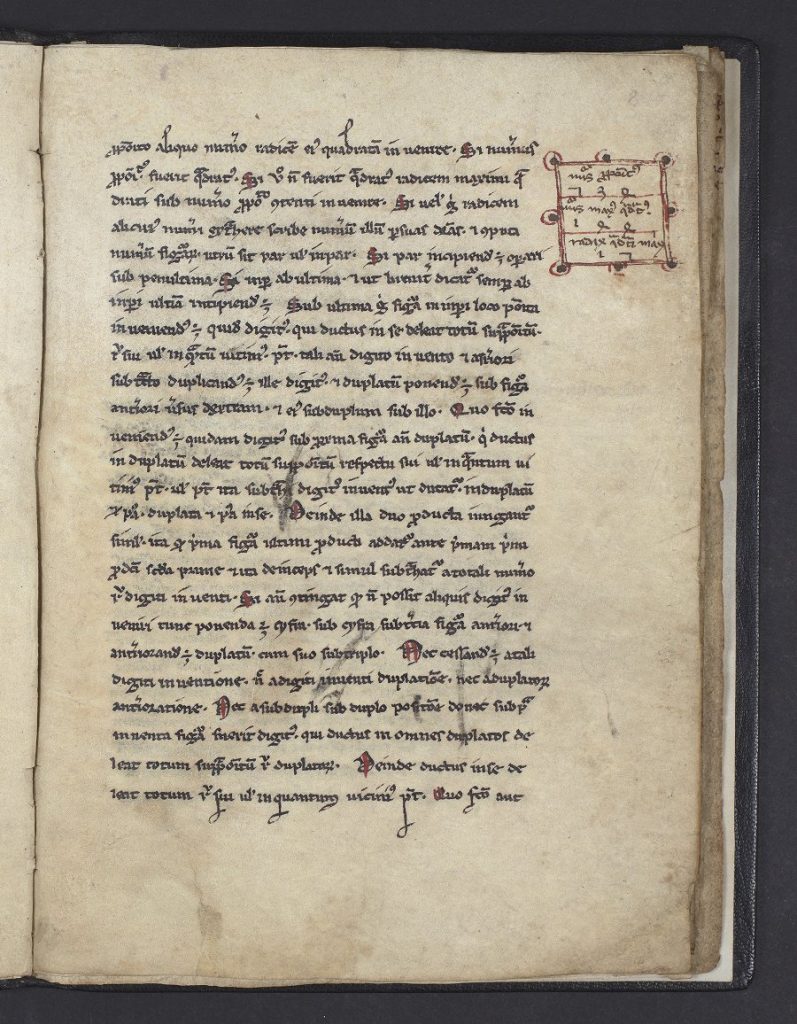
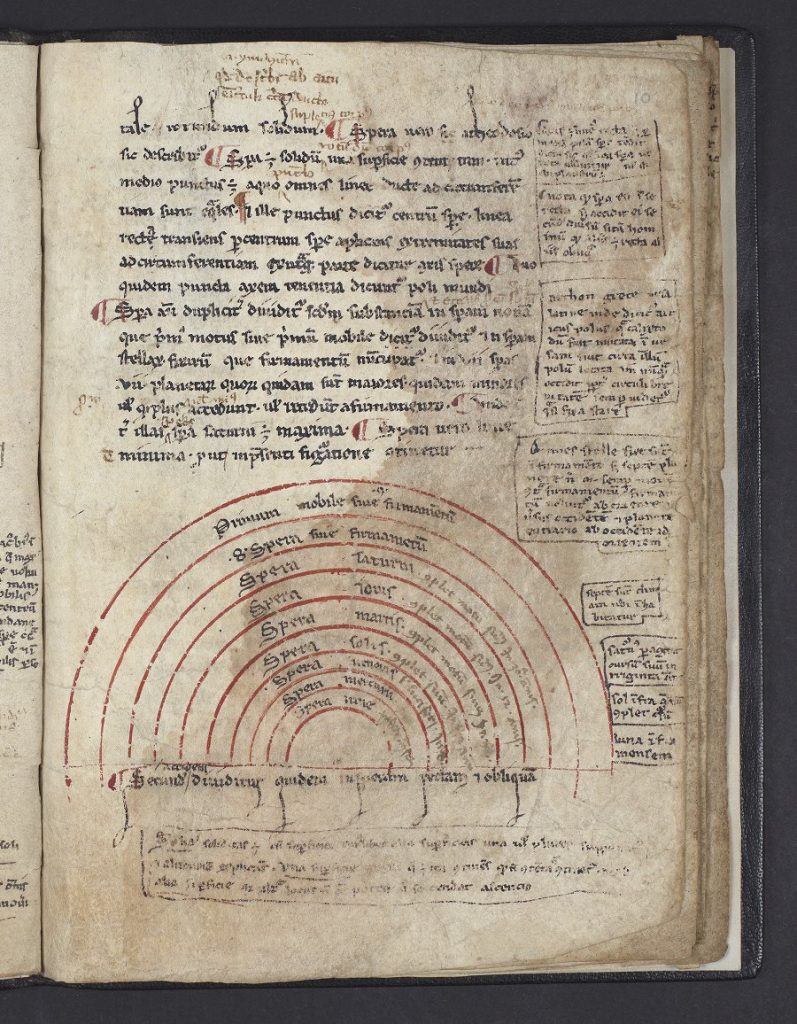
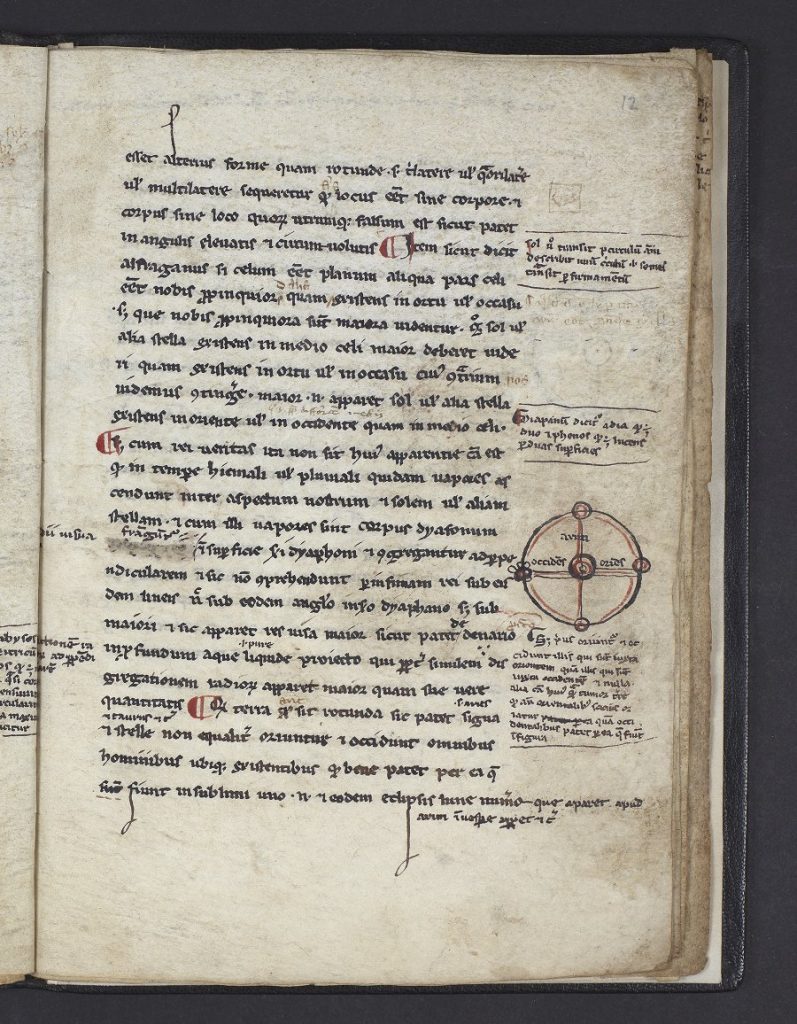
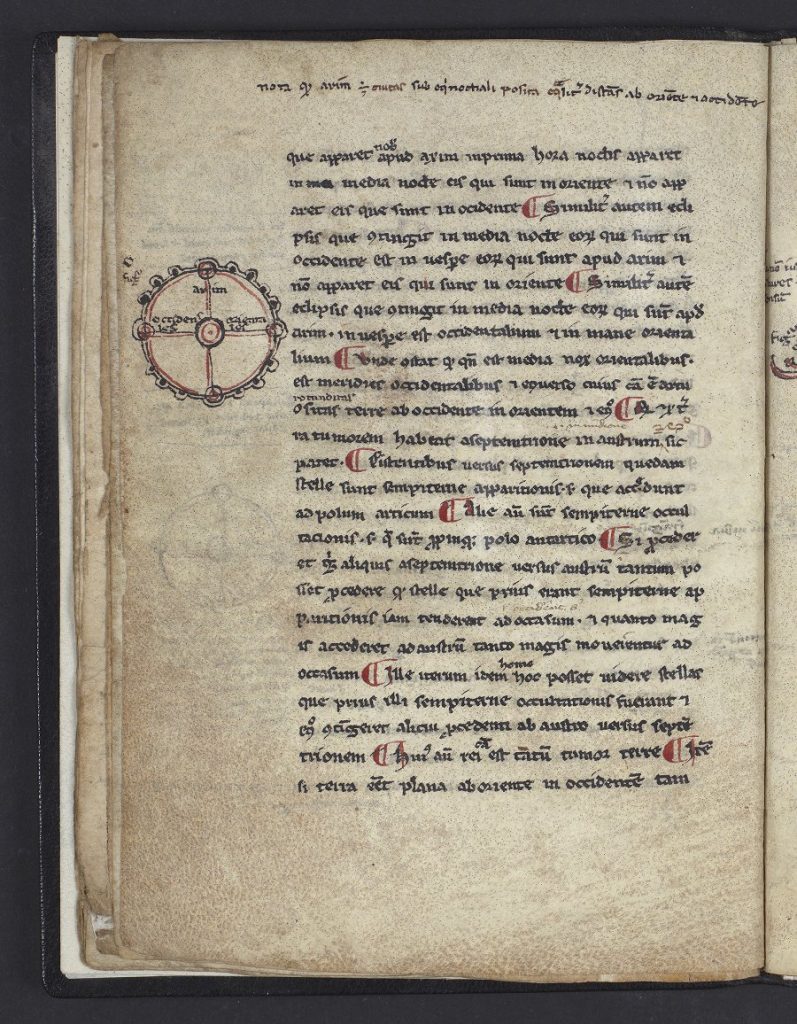
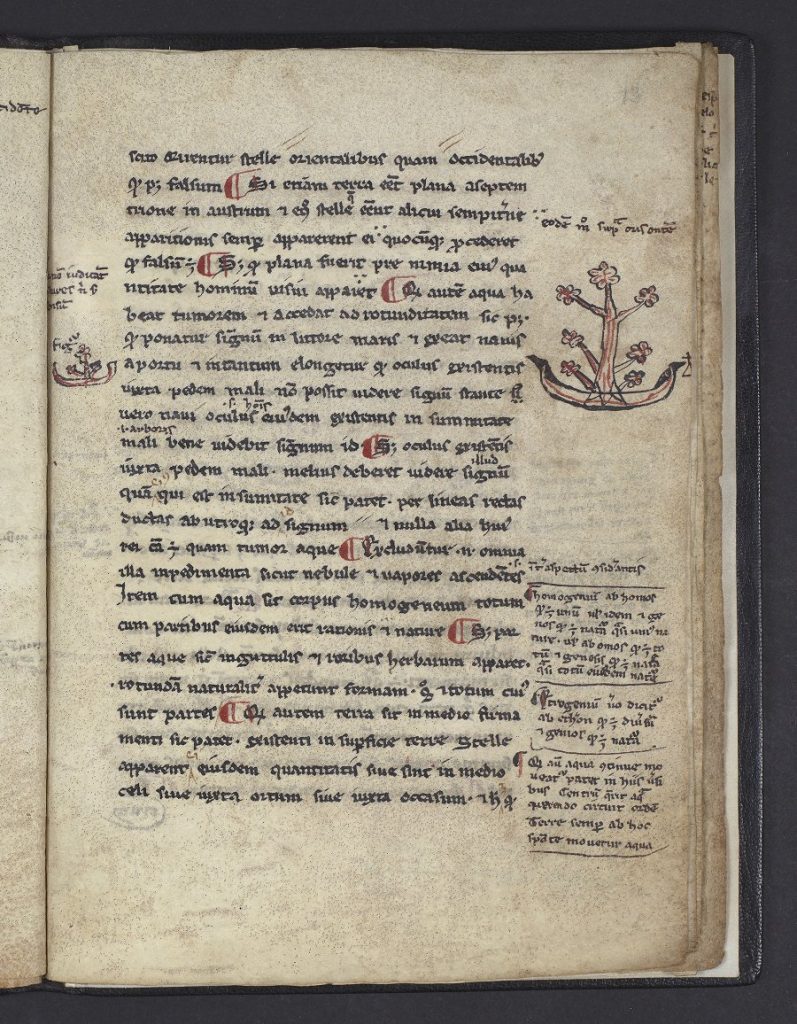
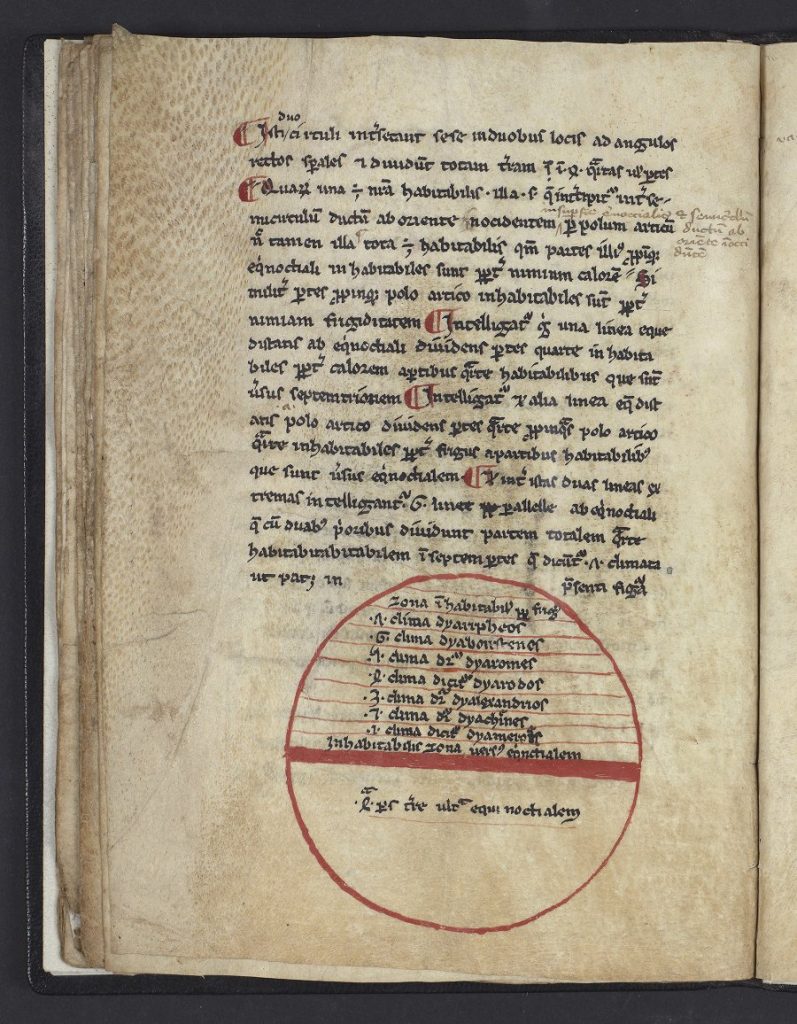
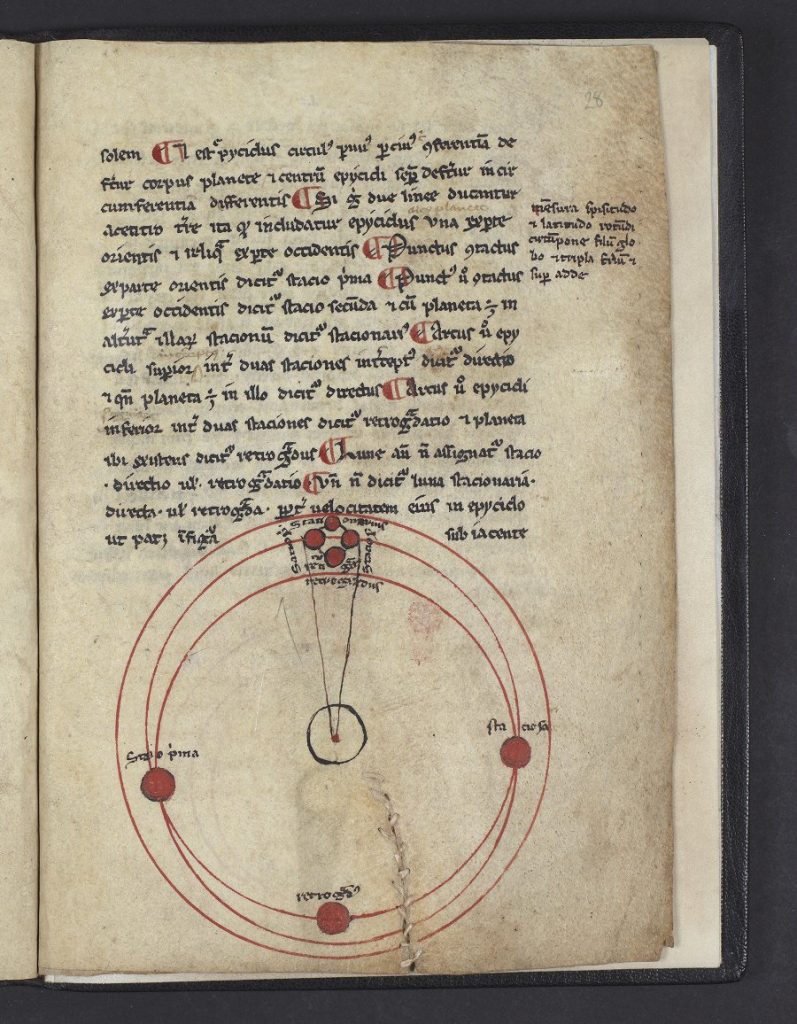
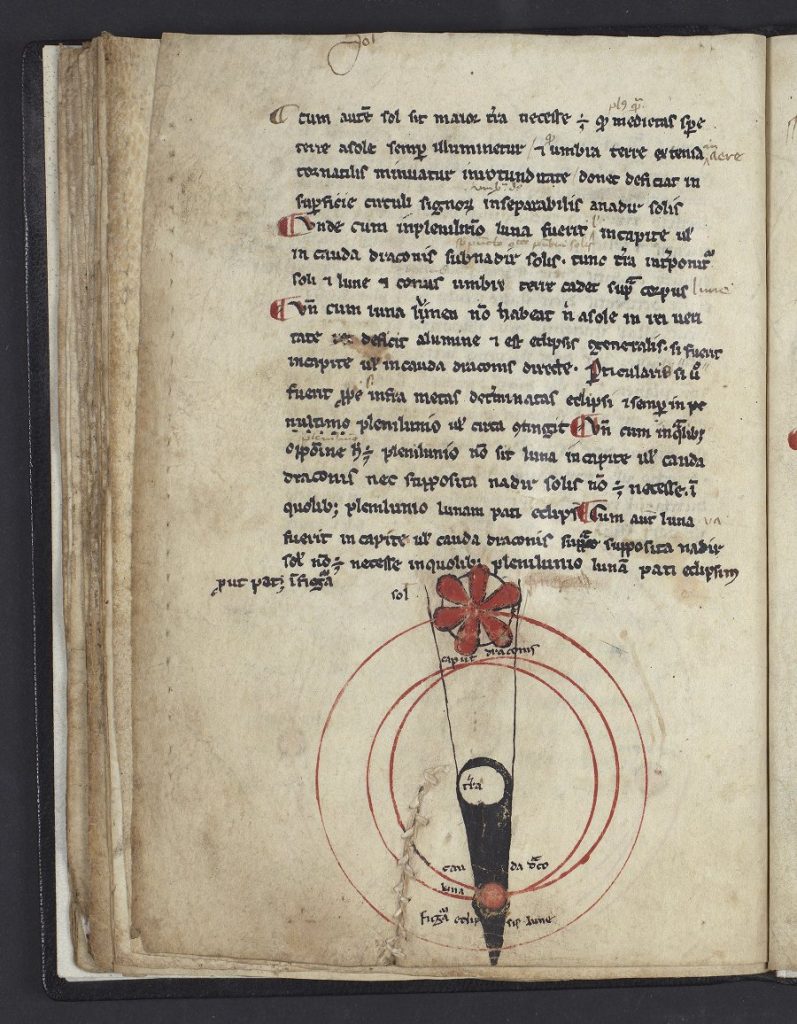
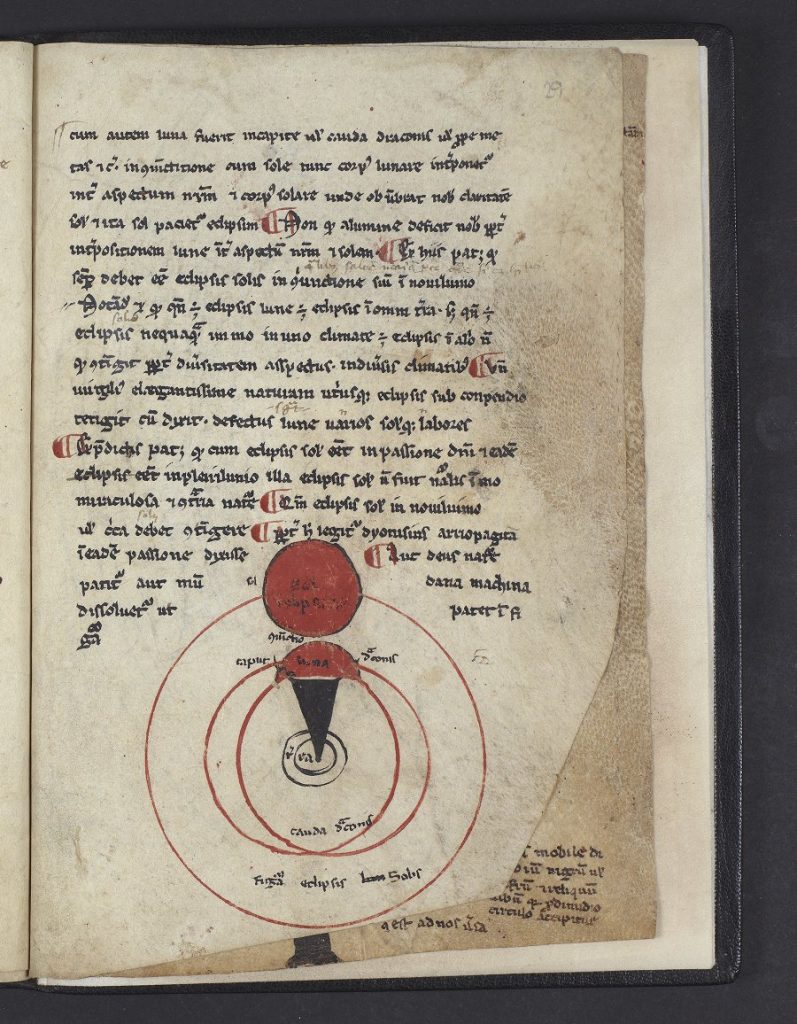
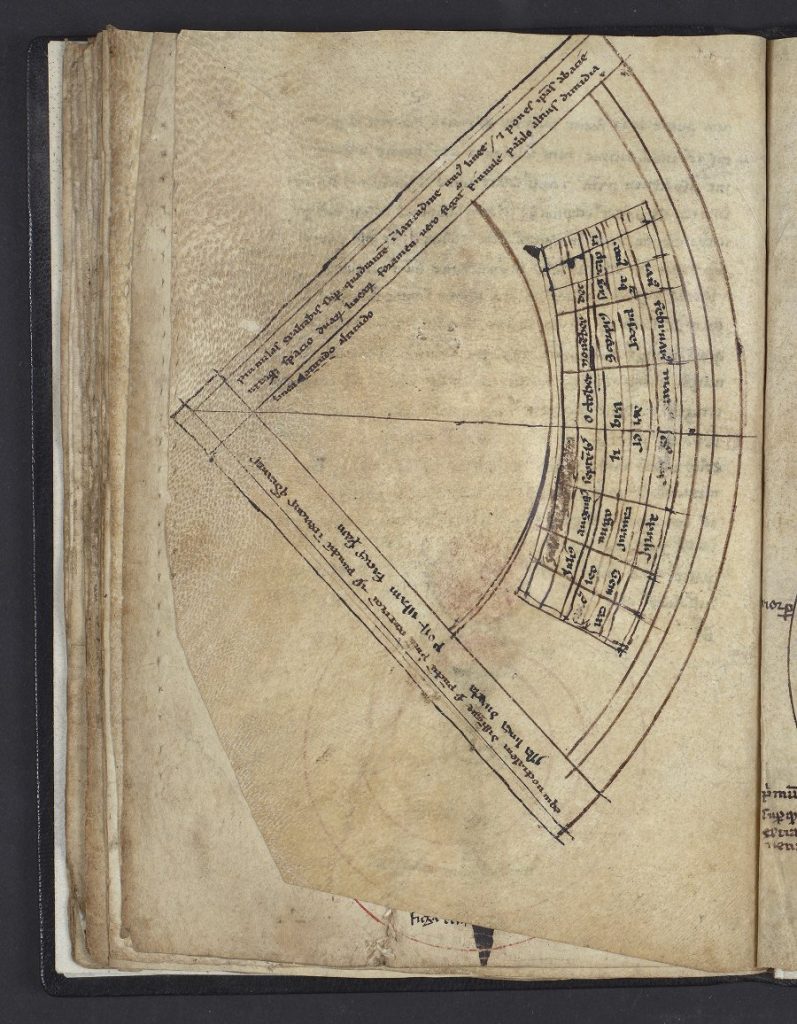
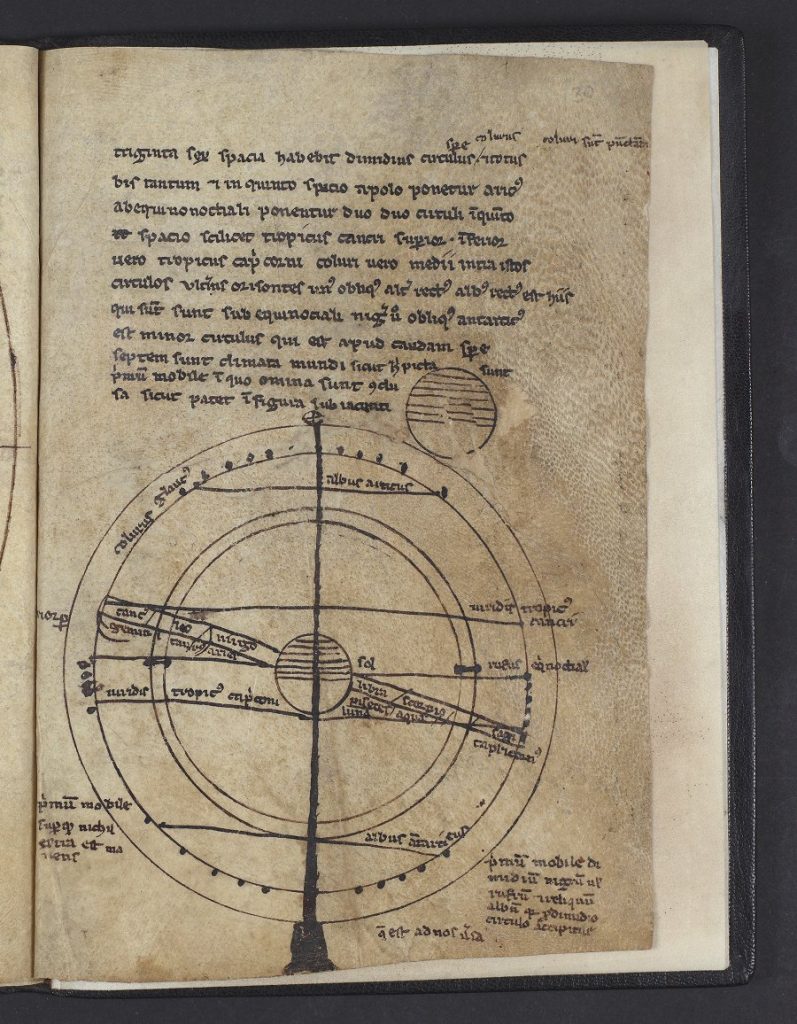
Italiaans/Duitse editie uit 1409
Link naar de volledige versie online; Grafische versie hier
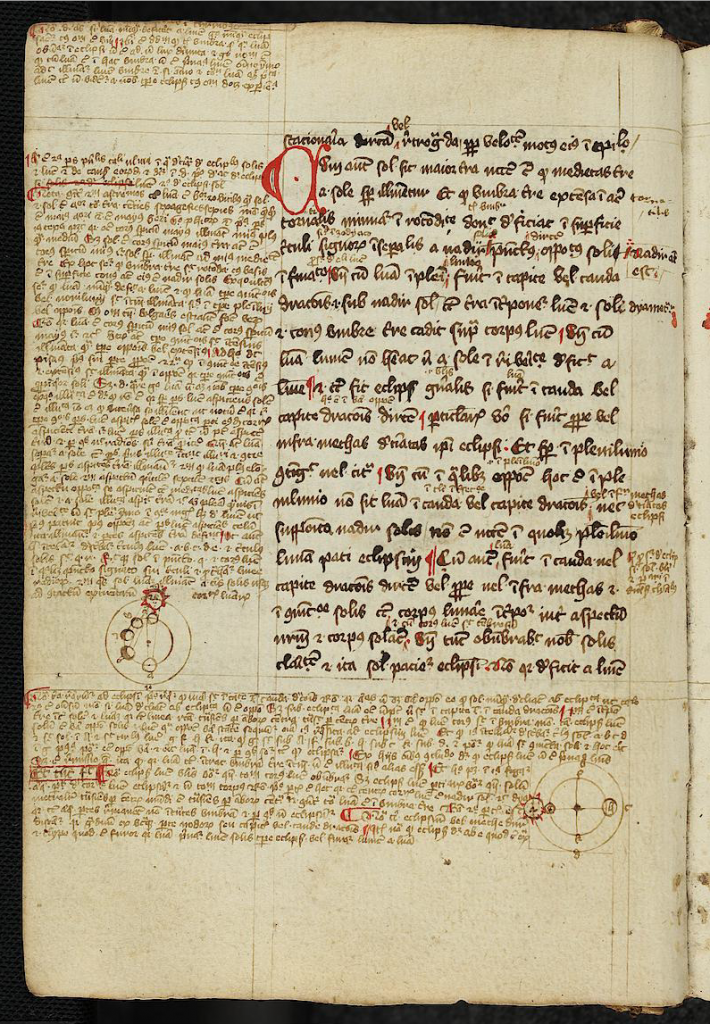
Oostenrijk – 1425
Een mooie gekleurde editie van het manuscript zo net voor de uitvinding van de boekdrukkunst, maar ook hier gaat weer iets mis met de illustratie… Deze versie geeft niet weer dat de aarde rond is…
Title: De sphaera
Created: Austria, ca. 1425
Binding: Austrian 18th-century mottled calf; the endpaper, with a Tobit and the Angel watermark, is not in Briquet.Credit: Purchased in 1927.
Description: 48 leaves (2 columns, 37 lines), bound : vellum, ill. ; 300 x 240 mm
Provenance: According to Gerhard Schmidt was formerly Codex 45 at Seitenstetten; purchased from Voynich in 1927.
Notes: Ms. astronomical texts; written and illuminated in Austria ca. 1425.
Texts: Joannes de Sacro Bosco (Johannes de Sacro Busto), Sphaera mundi (fol. 1-17v); ʻAbd al-ʻAzīz Ibn ʻUthmān (Alchabitius), Libellus isagogicus (fol. 18-48). The Sphaera mundi is the German translation of Konrad von Megenberg; the Libellus isagogicus is the German translation of Arnold von Freiburg from the Latin of Johannes Hispalensis.
Decoration: 1 full-page zodiac miniature; 6 small illustrations; 5 illuminated initials. The zodiac miniature has been attributed to Meister Nikolaus and his workshop, illuminators of the Missal of Wilhelm Turs (Vienna, Cathedral and Diocesean Museum, Cod. B 64, dated ca. 1425-1430)–Cf. Ausstellung Gotik in Österreich, p. 157, no. 92.
Script: German bastarda
Language: German
Hebreeuwse editie uit 1425-1450
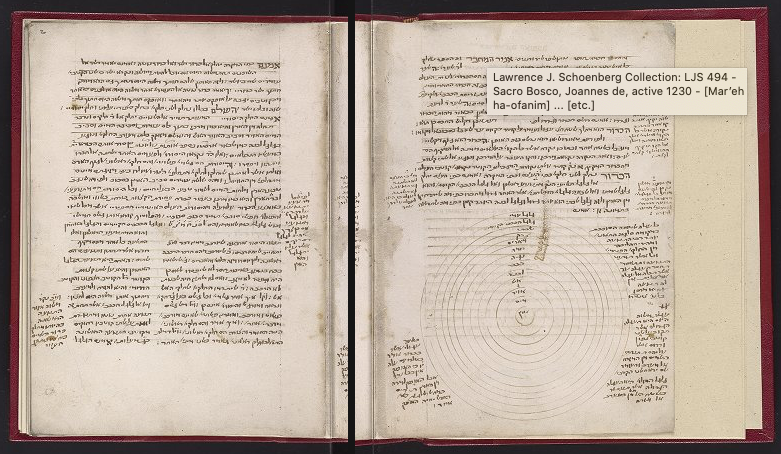
Hier de link naar de volledige versie !
| Author: | Sacro Bosco, Joannes de, active 1230. |
| Title: | [Marʼeh ha-ofanim] … [etc.] [manuscript].Sphaera mundi. Hebrew |
| Origin: | [Italy, between 1425 and 1450] |
| Physical description: | 22 leaves : paper ; 209 x 151 (143 x 104) mm. bound to 220 x 186 mm. |
| Summary: | Hebrew translation of a fundamental treatise on medieval astronomy and cosmology that describes and illustrates the Ptolemaic model of a spherical earth divided into climactic zones at the center of the concentric spheres of the universe. Followed by Ruaḥ ha-ḥen, a 13th-century philosophical work that was a popular introduction to science, here attributed to Yehudah ibn Tibon. It has also been attributed to Jacob ben Abba Mari ben Samson Anatoli and Zeraḥyah ha-Yeṿani. Occasional marginal notes. Final page contains Hebrew notes and pen trials by various hands (f. 22v). |
| Notes: | Ms. codex.Title supplied by cataloger.Foliation: Paper, iii (modern) + 22 + xxxv (modern); 1¹² 2¹⁰; [1-22], modern foliation in pencil, upper left recto.Layout: Written in 31-34 long lines; ruled in faint ink for horizontals with vertical bounding lines in lead.Script: Written in Ashkenazic semi-cursive script by 2 hands (f. 1r-11v, 12r-22r).Decoration: 3 astronomical diagrams (f. 1v, 2v, 10r); occasional manicules (f. 9v, 13r).Watermark: Briquet Tête de boeuf à yeux 14871 (Brescia, 1434-1445).Binding: 20th-century half morocco over cloth; gatherings sewn on stubs.Origin: Written in northern Italy in the second quarter of the 15th century (based on watermark information). |
| Cite as: | LJS 494 |
| Manuscript location: | Kislak Center for S |
Versies te koop
• Een 1482 editie te koop, zonder mijn geliefde illustratie, voor 14.500 GBP
Uitgelicht
Ik heb Sacrobosco uitgelicht; volg de link
Uiteindelijk heb ik er zelf een kunnen kopen op een (online) veiling in Milaan, een editie uit 1604 van Francesco Pifferi.


